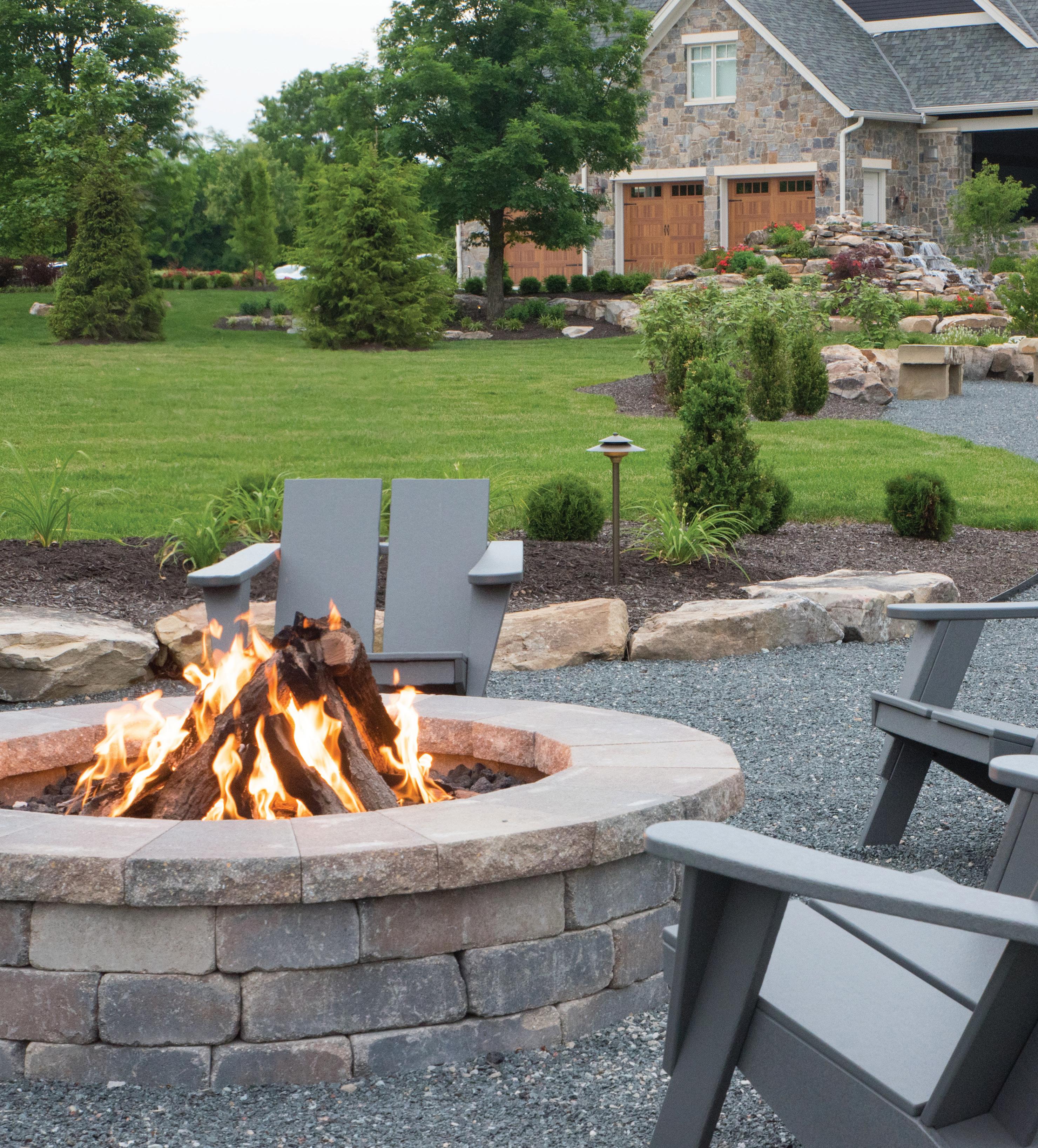


Indiana Nursery & Landscape News The Official Publication of the Indiana Nursery and Landscape Association www.inla1.org
THIS ISSUE
IN
Why They Matter
Plant Viruses and
Update
Awards of Excellence BROCHURE AND ENTRY FORM INSIDE! SEE PAGES 16-19 FOLLOW US! Volume 82 • Issue 6 November/December 2022 Indiana Nursery & Landscape News
Member Profile: Second Nature Landscape Management, Inc. Legislative
on H2-B
COVER: Calvin Landscape Residential Landscape Design/Build over $50,000
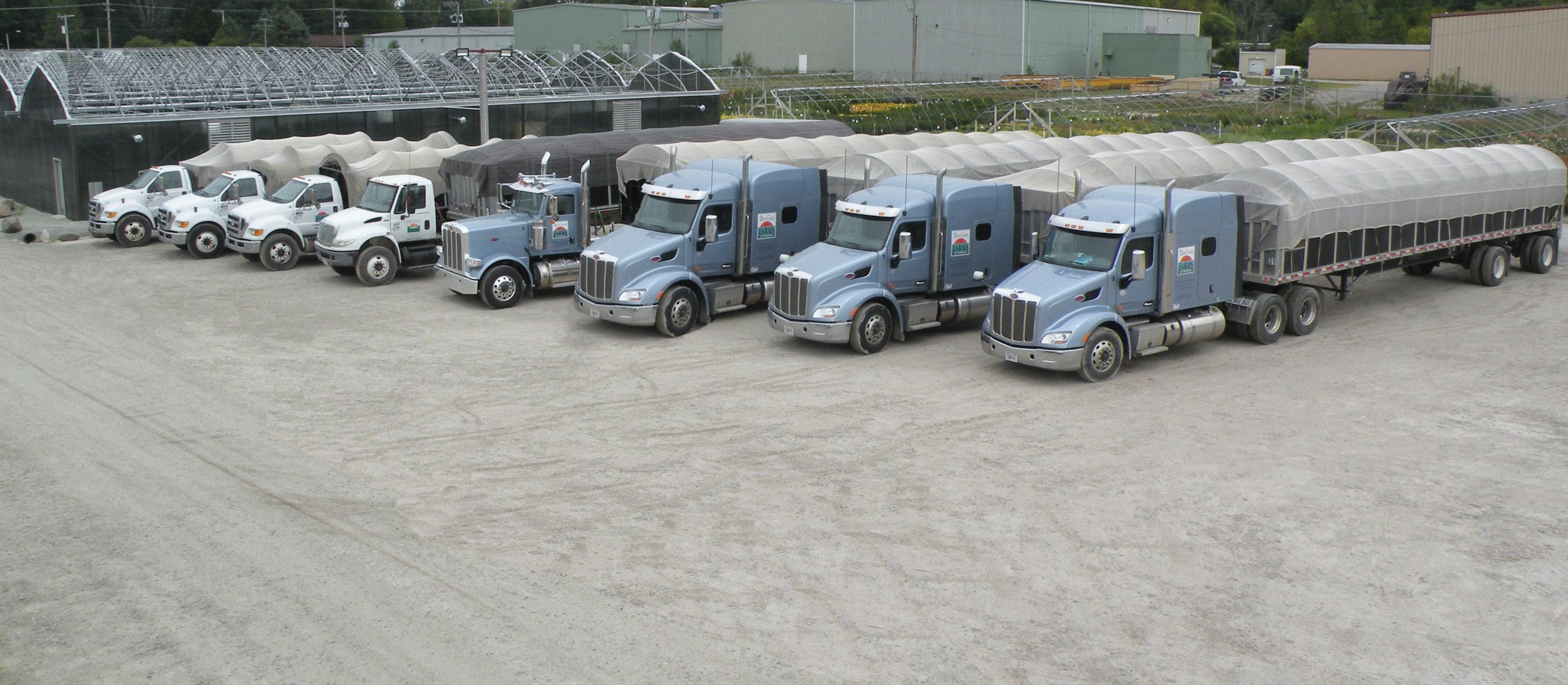
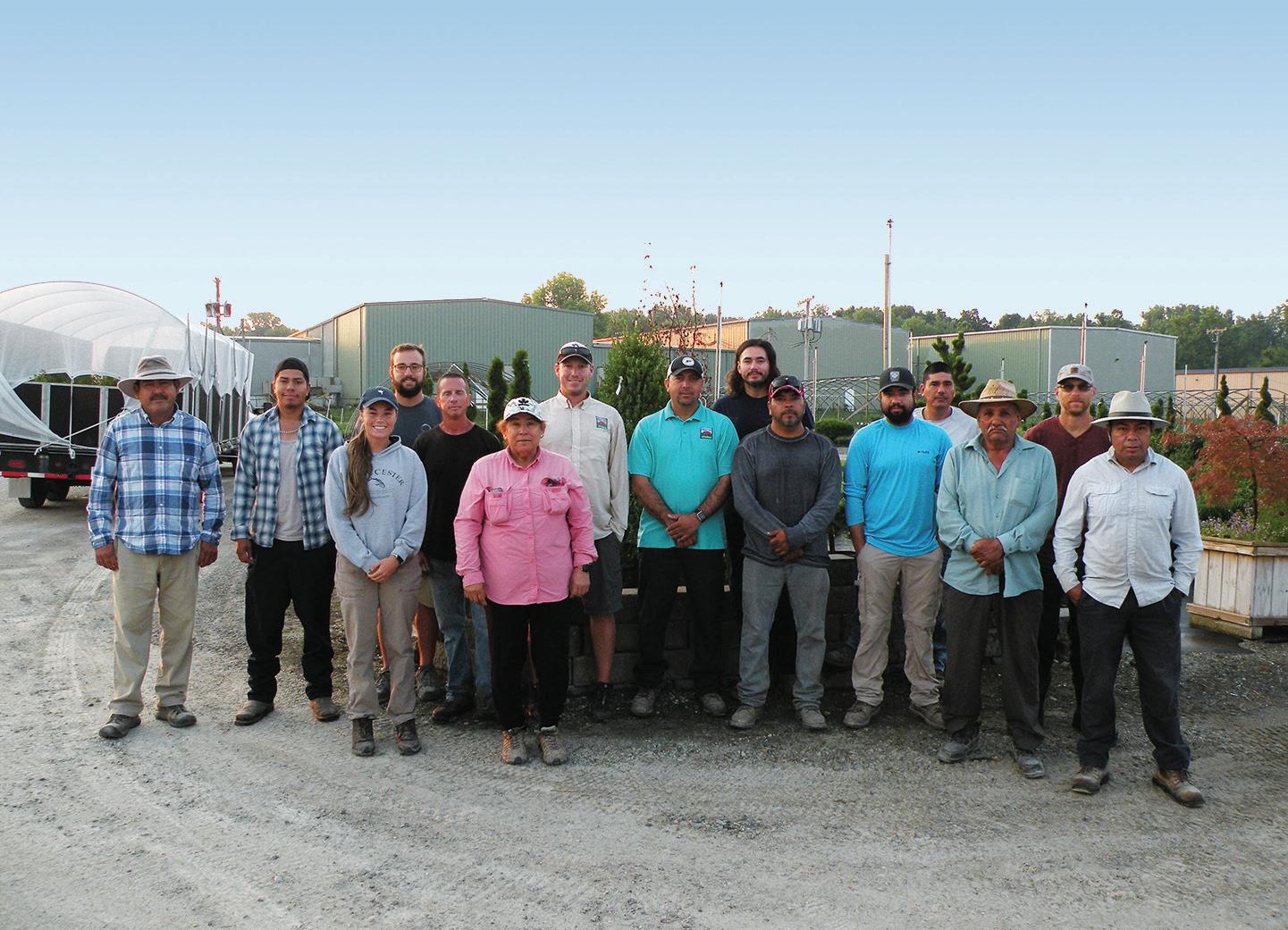
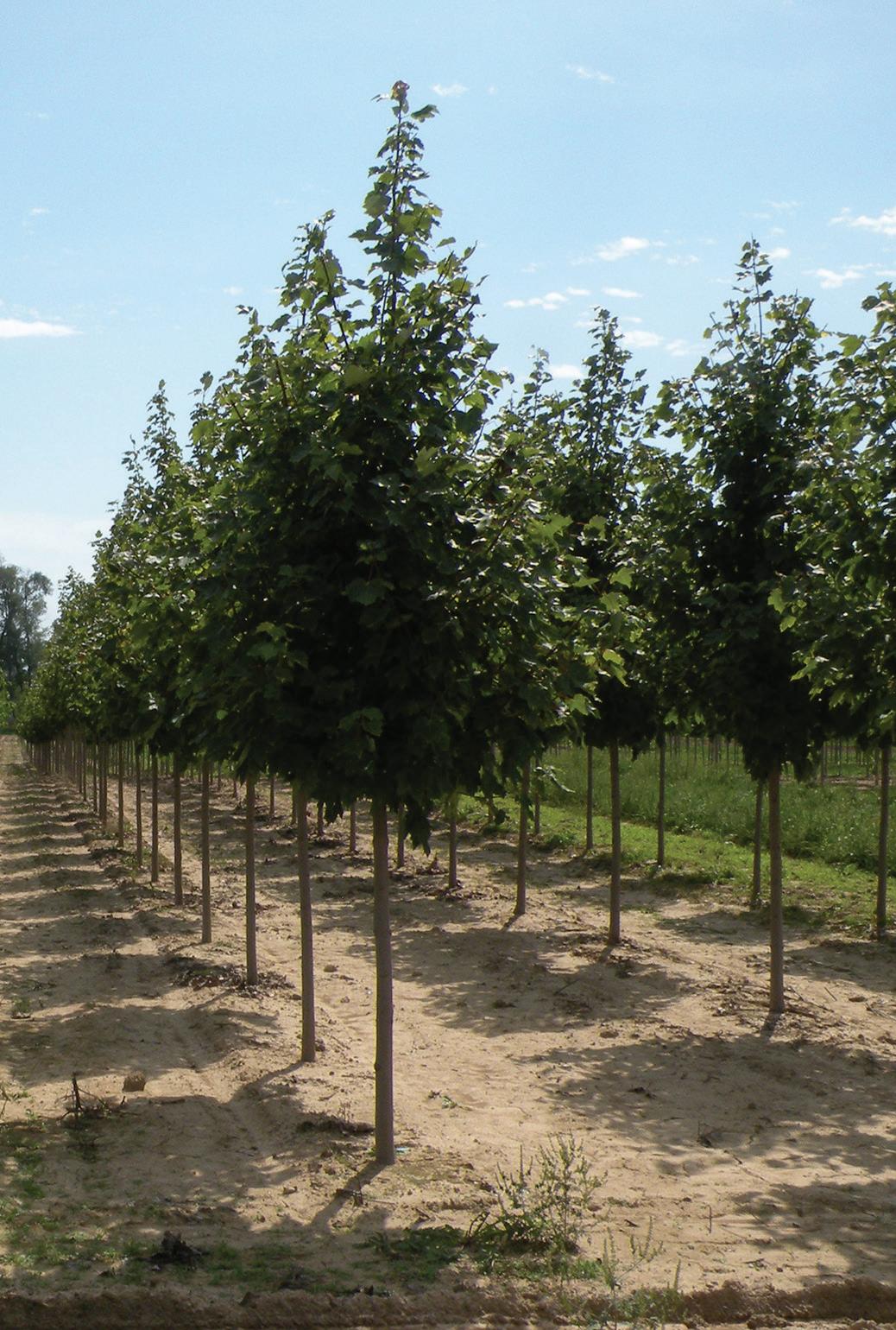
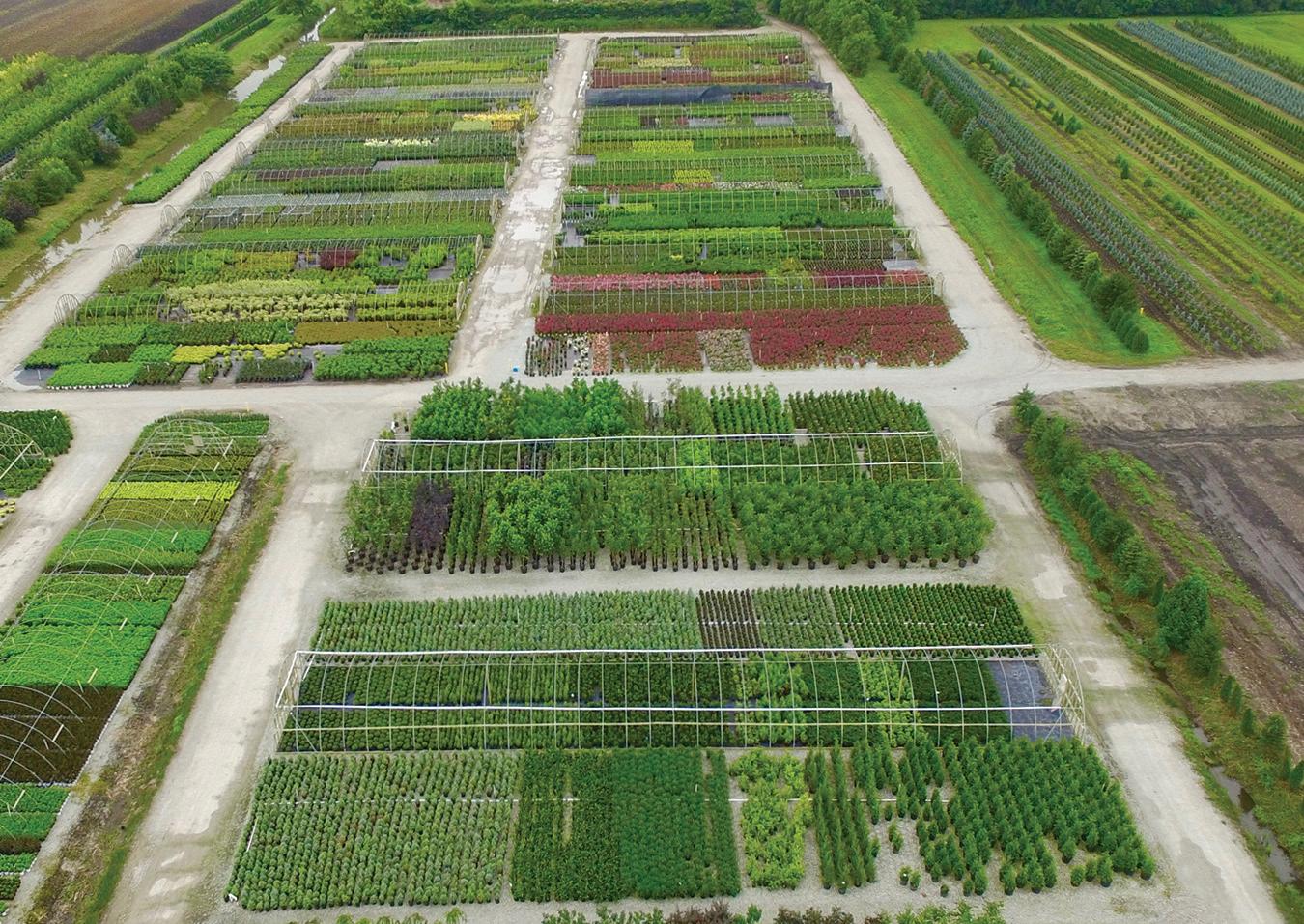
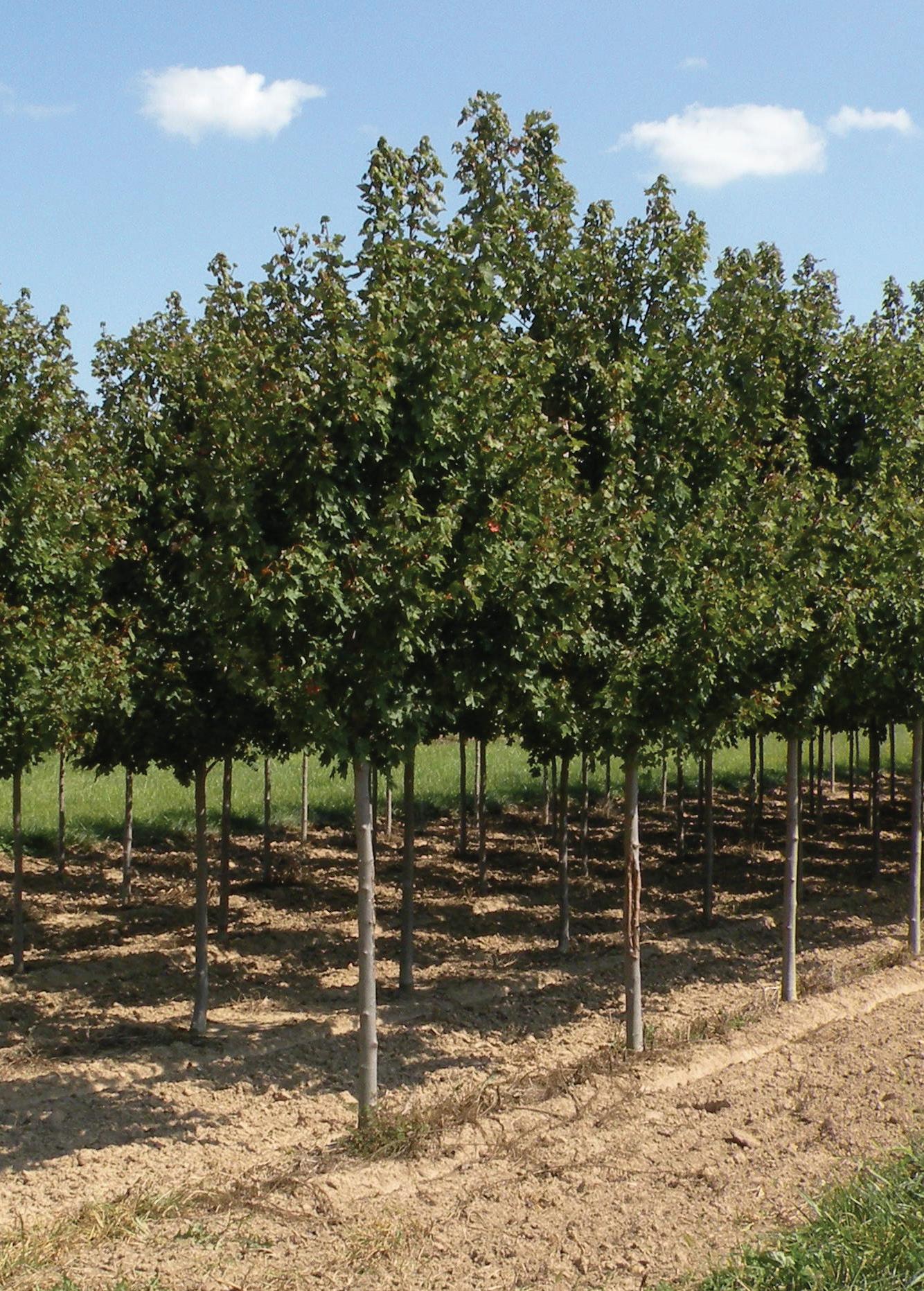
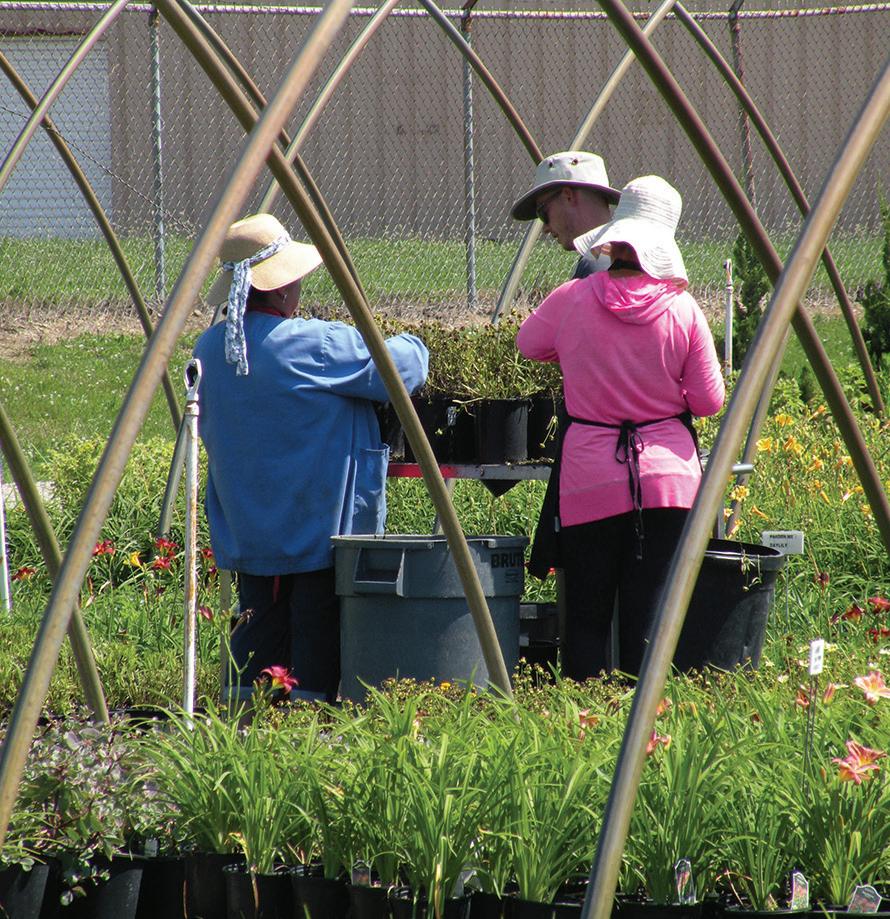

QUALITY TO DEPEND ON YEAR ROUND AVAILABILITY ROCK SOLID QUICK DELIVERY SERVICE SERVICE TWO CONVENIENT LOCATIONS TO SERVE YOU! www.bluegrassfarms.net MAIN NURSERY 1915 West 53rd Street, Anderson, IN 46013 765.649.1012 HOBBS YARD 1201 S County Road 1050 E, Indianapolis, IN 46231 317.406.3125 GREAT VALUE
Phone: 317-889-2382
Toll Free: 800-443-7336 www.inla1.org

PUBLISHER
Rick Haggard, Executive Director, INLA 765-366-4994 • rhaggard@inla1.org



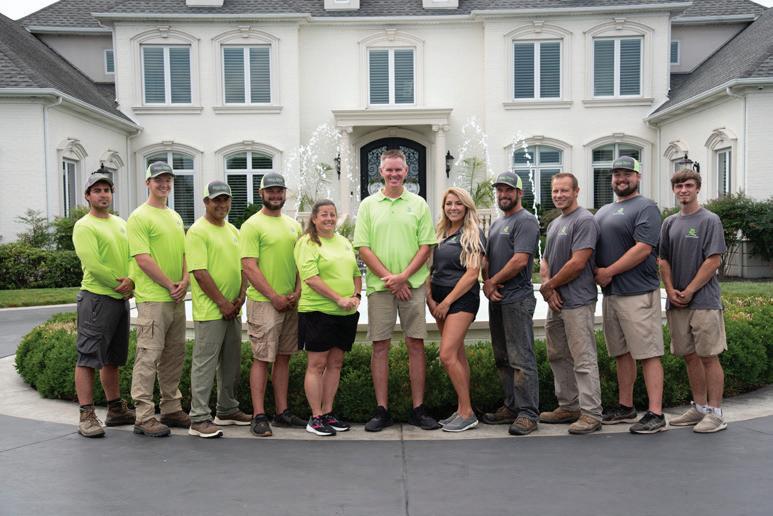
Advertising Rates: Media Kit available online at www.inla1.org
Copy Deadline: First of the month preceding the month of the issue. Reprint permission granted if source is indicated.
Views expressed in articles or editorials do not necessarily reflect the views and opinions of the association or its directors, but are those of the writer. Trade names used in articles are for identification only. No discrimination is intended toward similar products and the INLA does not endorse the use of the products mentioned.
Subscriptions: Included with membership to the INLA. Nonmembers: $36.00 per year (six issues per year).
For questions regarding subscriptions, please call INLA at 317-889-2382.
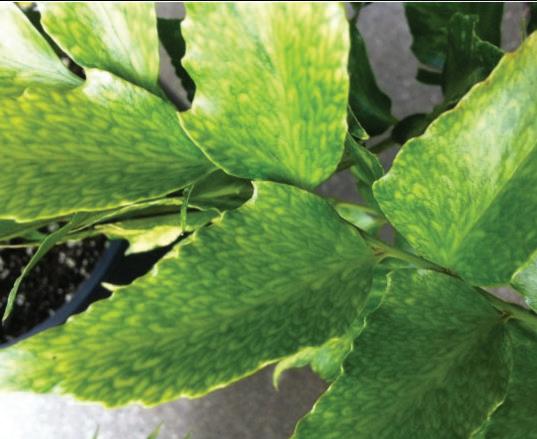
Contents Indiana Nursery & Landscape News Volume 82 • Issue 6 November/December 2022
Nursery and Landscape News
official
Nursery
Landscape
Indiana
is the
publication of the Indiana
and
Association, Inc. (INLA) and is published bimonthly.
Indiana Nursery and Landscape Association 7915 S. Emerson Ave., Suite 247 Indianapolis, IN 46237
Plus More! 4 Executive Director’s Message 6 Calendar Certification and Education 26 George Brenn’s IAH Study Guide New IAH Certification 28 IAH QUIZ – Earn CEUs! 30 Advertiser List, Classified Ads
Landscape
16 7 8 PRESIDENT'S MESSAGE 7 The Final Message from departing President Dean Ricci EDUCATION / IDNR SPOTLIGHT 8 Plant Viruses and Why They Matter EDUCATION / IDNR SPOTLIGHT 16 Member Profile: Second Nature Landscape Management, Inc. LEGISLATIVE 17 Legislative Update on DACA 24 Legislative Update on H2-B Cap
Cover Photo: Calvin Landscape Residential
Design/Build over $50,000
Stay connected to INLA
between issues.
Sign up for the INLA monthly eNewsletter at www.inla1.org.
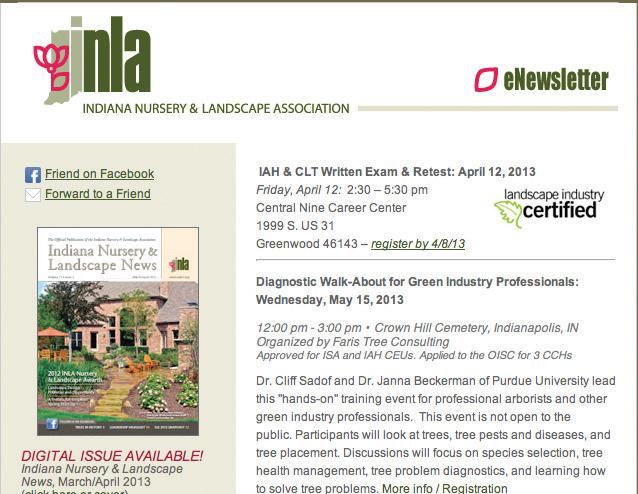
You will receive: Latest notices, the digital version of the magazine, reminders for events, and much more.
2022 INLA Officers
Dean Ricci, President Ricci’s Landscape Management, Inc. 502 Norbeh Drive, Hebron, IN 46341 219-996-2682; Fax 219-996-2680 dean@rlminc.com
Gabriel Gluesenkamp, President-Elect Designscape Horticultural Services 2877 S. TC Steele Road Nashville, IN 47448-9584 812-988-8900; Fax 812-988-2639 gabrielg@designhort.com
Shaun Yeary, Vice President Greendell Landscape Solutions 749 West State Road 42 Mooresville, IN 46158 317-996-2826; Fax 317-996-2032 syeary@greendelllandscape.com

Dave LaFara, Past-President David LaFara Hardscape Services 9920 Ash Lane Co Rd 375 N Paragon, IN 46166 765-537-2512 • dblafara@aol.com
Rick Haggard, Executive Director & Publisher 7915 S. Emerson Ave., #247 Indianapolis, IN 46032 Office: 800-443-7336 or 317-889-2382 Cell: 765-366-4994 rhaggard@inla1.org • haggard.rick@att.net
BOARD OF DIRECTORS
Erick Brehob (2023) Brehob Nursery • 317-783-3233 erick@brehobnursery.com
Kyle Daniel — Purdue University 765-494-7621 • daniel38@purdue.edu
Jill Glover (2023) Schneider Nursery • 812-522-4068 jill@schneidernursery.com
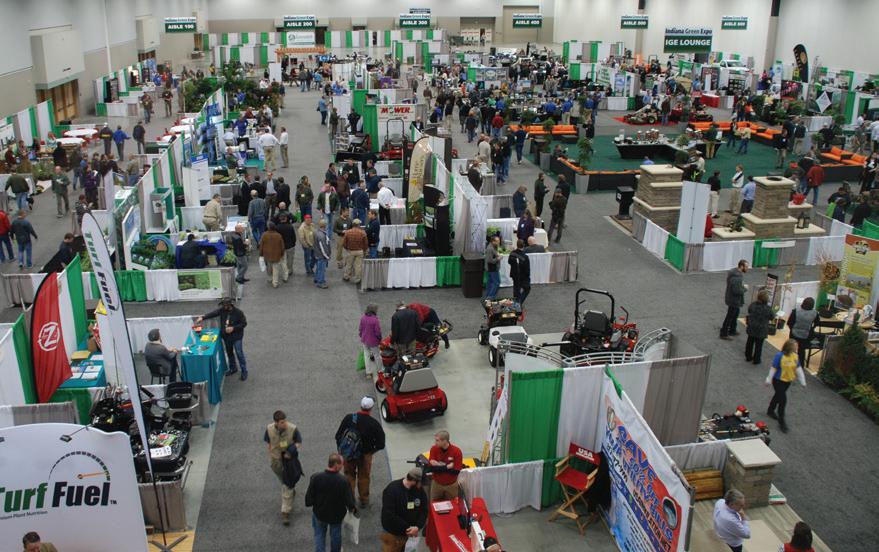
Mark O’Brien (2022) Cardno • 574-586-2412 mark.obrien@cardno.com
Kevin Van Sessen (2024) Blade Cutters, LLC. • 219-661-8206 kevinvs@bladecutters.net
Bob Wasson (2022) Wasson Nursery and Garden Center 765-759-9000 • bob@wassonnursery.com
Kent Wilhelmus (2024) Second Nature Landscape Management 812-483-7817 • kent@secondnaturelm.com

2 INDIANA NURSERY & LANDSCAPE ASSOCIATION • www.inla1.org
Hotel and exhibitor information now available at: www.IndianaGreenExpo.com JANUARY 30–FEBRUARY 1 at Indiana Convention Center, Indianapolis, Indiana
Indiana’s largest, most comprehensive green industry event of the year! • Educational workshops • Over 100 seminars • Earn CCHs/CEUs • Plus 2-day trade show!
SAVE THE DATES
NOTHING LESS THAN TOUGH.
Your job requires nothing less than tough. Whether you’re digging, cutting, shredding, loading or moving, we have one line of equipment versatile enough to make any job a whole lot easier. Ask your dealer today about our compact and grounds maintenance equipment.

BOBCAT OF INDY 2935 Bluff Road Indianapolis, IN 46225 317-787-2201
BOBCAT OF ELLETTSVILLE 700 East Temperance Ellettsville, IN 47429 812-287-8042
BOBCAT OF ANDERSON 2075 East County Road 67 Anderson, IN 46017 765-643-4222
BOBCAT OF HOWARD COUNTY 613 W Main Street Greentown, IN 46936 765-628-2800
BOBCAT OF COLUMBUS 890 N National Rd Columbus, IN 47201 812-775-1470
BOBCAT OF INDY NORTH 4489 S Indianapolis Road Whitestown, IN 46075 317-769-4946
INDIANA NURSERY & LANDSCAPE NEWS • NOVEMBER/DECEMBER 2022 3
bobcatofindy.com Bobcat ® and the Bobcat logo are registered trademarks of Bobcat Company in the United States and various other countries. ©2022 Bobcat Company. All rights reserved.
Choose

EXECUTIVE DIRECTOR’S MESSAGE
NORTH INDY
4931 Robison Road
Indianapolis, IN 46268
(317) 228-4900
SOUTH INDY
5202 S. Harding Street
Indianapolis, IN 46217
(317) 782-8600

NOBLESVILLE 1893 S. 8th Street
Noblesville, IN 46060
(317) 774-7100
To all my friends, colleagues, business associates, mentors, and others from the darker side, this will be my last Executive Director……for 2022. “Gotcha” as they said in the Doc Hollywood movie. Generally, this edition of the Indiana Nursery and Landscape Newsletter (INLN), focuses on the educational side of goings on in our industry, with a prime focus on the upcoming Indiana Green Expo. While we do have the registration included in this edition with workshops, including the ICPI 2-day course. The details of the educational sessions will be coming in a more comprehensive mailing, plus a blast email in the next few weeks. I hope everyone, takes time to look at a few legislative updates on the national forefront with the release in 2023 of extra visas, plus a ruling that will impact the DACA ruling. Also a reminder, the Green Excellence Awards need to be submitted by December 15, 2022 to the INLA. You’ll see the entry form in this issue.
Rick Haggard

2022 has seen several changes in the INLA as we have launched a Social Media Marketing campaign, that is to garner more communication and recognition within our membership ranks. If you have not seen the INLA Facebook/Instagram page, please take a moment over the upcoming holiday season and checkout some videos and posts. We are even starting our own YouTube page, to try and be more interactive and current with our members regarding important information that may need your support, or at a minimum input on certain topics, especially with the upcoming Indiana Genera Assembly. Scott Johnsen (sjohnsen@ inla1.org) is overseeing this project and as done several visits across the state with several members, plus contacting non-members in the areas visited.
Next will be the doldrums of legislative impacts on our industry. Finally, some good news for those that utilize the H2B program, which in recent years have had swings ending in more misses than hits. The Department of Homeland Security has approved the release of an extra roughly 65,000 more visas. While this will not solve the immediate current labor shortage in our industry, I am hopeful more companies and members can get back to working to the capacity they need to be a more profitable entity. Especially, since our industry is being recognized as the professionals we always have been.
Now to the Event of all Events, the 2023 Indiana Green Expo! The 2023 IGE will be held at the Indiana Convention Center for the 16th year, unfortunately the 2021 IGE Show was only virtual due to COVID. We are offering a wide range of sessions that will assist all facets of employees in garnering “new” as well as standard procedures within the many areas of the green industry. The dates are January 30 to February 1, 2023 with the trade show taking place in Hall F with Hall G being our move in/out location. January 30, 2023 will be our workshop day, include Day 1 of the 2 day ICPI Training, plus the INLA – IAH Review and Exam. The INLA Annual Meeting and Awards will be January 31, 2023, look for room information coming soon. A more comprehensive educational session track will be mailed and emailed, as well as posted on the Indiana Green Expo website (www.indianagreenexpo. com). We have as of this writing 6 new or returning companies exhibiting at the 2023 IGE. Hotel booking is available on the website with The Crowne Plaza our host hotel.
I realize that this article is a mere synopsis of various topics, so feel free to contact me via text, email or phone at either of these numbers: (317) 889-2382 or (765) 366-4994. Be safe and well in your travels during the holiday season over the next couple of months and look forward to our next gathering at the Indiana Green Expo.
Keep it green,
Rick Haggard, INLA Executive Director rhaggard@inla1.org cell: 765-366-4994
4 INDIANA NURSERY & LANDSCAPE ASSOCIATION • www.inla1.org
Your premiere landscape supply store in central Indiana.
of
at
three
from an extensive supply
products
any of our
locations
Call for a quote! 800-365-5678
tiffanylawnandgarden.com
Welcome New INLA Members!
ACTIVE MEMBERS:
Weed Man Lawncare

Patrick Reuteman
574 Wheeling Road
Wheeling, IL 60090
ASSOCIATE MEMBERS: White River State Park
Joe Denning
Ph: (317) 945-7800
801 W Washington St. Indianapolis, IN 46204
Use the QR code below to see a recent member highlight. These videos are complimentary for any INLA member. Just send us a direct message.


INDIANA NURSERY & LANDSCAPE NEWS • NOVEMBER/DECEMBER 2022 5
Several factors have left Puerto Rico with unemployment rates well above national average. Since Puerto Ricans have been U.S. citizens since 1917, they are not subject to the many visa labor restrictions. While there are regulations with the Puerto Rican Department of Labor, we have developed a program to obtain the necessary approvals to recruit in Puerto Rico and provide Puerto Rican laborers. We have also established recruiting networks in other areas of the United States that persistently sees high unemployment and an excess of laborers.
To find out more, email Jim Calvin at jim@calvinlandscape.com


CALENDAR
November
17–18 Turf & Landscape Seminar
This two-day workshop features down-to-earth information for the beginning green industry professional and more advanced topics for the seasoned professional. Content and topics for this seminar are new each year and include information for those managing both turf and landscapes. OISC CCHs are approved for this event in several categories.
27–30 2022 International Plant Propagators’ Society (IPPS) Eastern Region Annual Conference
Hyatt Regency, Long Island, Hauppauge, New York • Gain fresh ideas, inspiration, and practical knowledge you can begin to implement immediately. https://www.ippseasternregion.org/
December
1 INLA Awards Of Excellence Submission Deadline
5 The Irrigation Show
Las Vegas, NV
For members of the nursery and landscape industry, this is the perfect opportunity to access the latest innovations in landscape irrigation technology, landscape insights from industry experts and unique social events, all in one exciting location!

6 Herbicide Workshop (Fort Wayne)
8 Herbicide Workshop (Indianapolis)
This workshop is designed for beginners and for more experienced professionals who want more information on herbicide use principles and discussion of how to control common green industry weeds. This workshop offers training in weed identification, integrated weed management, selecting the right herbicides, enhancing weed control, and updates on the latest weed research findings. OISC CCHs are approved for this event in categories 3a, 3b, 6, and RT
January
30
The Indiana Green Expo Indianapolis, IN
Indiana's largest, most comprehensive green industry event of the year. Educational workshops, over one hundred seminars, earn CCH/CEU's, plus a 2-day trade show. See additional info below!
6 INDIANA NURSERY & LANDSCAPE ASSOCIATION • www.inla1.org
Education January 30 – Feb 1 Trade Show January 31– Feb 1 Exhibitor booths now on sale! Go to www.indianagreenexpo.com for details. Visit http://inla1.org/events-calendar/ for updates and new event listings. SAVE THESE DATES • SAVE THESE DATES • SAVE THESE DATES January 30 – February 1, 2023 (a Monday – Wednesday event)
We are a recruiting agency specializing in seasonal to permanent staffing services for U.S. companies.
PRESIDENT’S MESSAGE
The professional landscape industry has faced a severe worker shortage for many years; however, 2021 had brought on the worst labor market in recent history and that trend has continued into 2022. If you took a poll not only in Indiana but nationally about the industry’s biggest challenges, attracting and retaining qualified workers would likely lead the list. How do you create an ecosystem of the right people that want to collaborate and help achieve and support company objectives in an environment of low unemployment? While I don’t have all of the answers or have a magic formula, I have focused my efforts on building and investing in company culture.
This will be an ongoing initiative but here are some ideas that I have either implemented or am considering implementing in my company:
Training Programs
•Pre-season training to ramp up the crews
•Lunch and learns with vendors because food is the way to reach a person’s heart
•Vendor specific training on products and equipment is a great way to learn proper operational techniques from experts
Competitive Compensation
•We offer wages that are at or above local industry averages
•Employees are eligible for retirement savings plan, insurance, paid vacations and holidays
•We do offer employees year-round employment by using the off season to repair equipment, train, and of course, plow and salt
•Hiring incentives to keep new recruits coming in while rewarding the person that brought the recommendation forth
Team Building
•We host a holiday party each year with food, gifts and a theme, which is usually a casino night where everyone wines a prize. It is not only a thank you for my people but also a recruiting event.
•Carry in breakfast/lunches for company meetings
•Friday night cookouts where I cook for the guys. We invite vendors and family vendors to this event as well
Employee Empowerment and Decision-Making Rights
This is another definite area of improvement for me and my company. The employees are the ones in the field and are the subject matter experts. Trust needs to be built so they feel free to make certain jobsite and project decisions.
Providing Work/Life Balance with a Family Oriented Focus
This is the first of the areas that need significant improvement in my company. Because our work is seasonal, we work to complete as many projects as possible during periods that are workable. When you get into the busy season, you tend to forget that employees have outside obligations.
Appreciation Program
•Production bonuses for great execution
•Attendance bonuses twice a year to reward those who always show up
•Non-smoking raises because nonsmokers are safer and more productive than smokers
•Employee loan program for those employees who have been with the company more than 4 years
Finally, and most important: Owner Self Awareness
•This effort is the hardest one of all. I work each day on trying to be a more compassionate leader, a better listener, and a strong supporter of my field and office staff.
•Being available and approachable for the staff and make time to hear what the team has to say. Listen to the employees’ concerns and make sure they know they have a voice.
As I stated earlier in the article, I don’t have a magical solution for curing the labor shortage issue, however, employing these ideas has helped me to engage the core body of our talent to return year after year.
As the exiting President of the INLA, this will be my last article of the President’s Letter. I hope some the information and insight provided has helped in some way. As a past President, I look forward to any feedback on the INLA events and the association as a whole. We welcome your suggestions and look forward to improving our industry. Thank you for your support and remember “Progress is the Product”.
Dean Ricci, INLA President Ricci’s Landscape Management, Inc.

INDIANA NURSERY & LANDSCAPE NEWS • NOVEMBER/DECEMBER 2022 7
Dean Ricci
Plant Viruses and Why They Matter

 By Angela Rust
By Angela Rust
Since late 2019 the world has become more familiar with human viruses than anyone ever wanted, but did you know that plant viruses are an increasing global threat too? With an estimated 10% of the world population facing food insecurity and billions of dollars in crop losses globally from plant viruses, it is important to all areas of the plant industry.
Many viruses that are economically devastating to food crops can infect ornamental plants. The impacts to ornamentals may be minor in some cases but depending on where those virus infected plants end up in the landscape, they could have a detrimental effect on nearby food crops. It is important to know that once a plant is infected with a virus, the plant remains infected for the life of the plant.

While some viruses may only infect a small group of plants or one genus or species of plant, there are other viruses that have hundreds of different hosts. Further complicating the picture is the fact that some viruses may be present in a plant yet cause no symptoms or only minor symptoms that are easily overlooked. Asymptomatic carriers are a leading cause of propagation infection and disease spread. Getting a virus infection in one group of plants and not recognizing subtle symptoms may put several of your surrounding plants at risk. Escaped viruses may then be destined to spread to nearby gardens or crop production areas.
Increased international and domestic trade of plant material has increased the risk of viruses and other pathogens spreading to new areas and into new host plants. When virus-infected, newly introduced crops grow next to native vegetation, new encounters between viruses and vulnerable native plants may have the potential to create virus epidemics. Many states and countries recognize this risk and have regulations in place to protect essential food crops and cherished natural resources from these threats.
Viruses can spread through many pathways of transmission such as:
• Insect and mite transmission
• Transmission by infected seed or seed debris
• Transmission via infected bulbs, corms, tubers, and rhizomes
• Transport of budded or grafted plants or plugs or rooted cuttings
• Contact with infected root grafts
• Movement of pollen from infected plants
• Movement through virus infected fungi
• Nematode transmission
• Virus infected tools and clothing
How a virus is transmitted will depend on the specific virus; not all viruses can be transmitted in the same way. Some viruses have only one type of transmission pathway and others may have multiple means of spread.
Viruses of regulatory concern include the rose mosaic virus complex. This name refers to a small grouping of viruses that can be found individually or as mixed infections on the same plant that contribute to viral mosaic symptoms in rose species. Some of these viruses include Prunus necrotic ringspot virus (PNRSV), Apple mosaic virus (ApMV), Arabis mosaic virus (ArMV), Tobacco ringspot virus (TRSV), Tomato ringspot virus (ToRSV) and Strawberry latent ringspot virus (SLRSV). The viruses most detected in symptomatic roses are PNRSV and ApMV. This complex of viruses is primarily spread through grafting of healthy buds or scions onto infected rootstock, grafting of infected buds onto healthy plants, or through use of infected vegetative propagation equipment. It is also suspected that this disease complex can be
(Continues on page 10)
8 INDIANA NURSERY & LANDSCAPE ASSOCIATION • www.inla1.org INLA NEWS
Photo 1 (above): Apple Mosaic Virus on Rose, by Vince Burkle, IN DNR
Photo 2 (below): Wheat Streak Mosaic Virus on Corn, by Angela Rust, IN DNR
Photo 3 (below): Impatiens necrotic spot virus on Sunpatiens.
EDUCATION / IDNR UPDATE
Photo taken by Ren Hall, IN DNR
•
• -




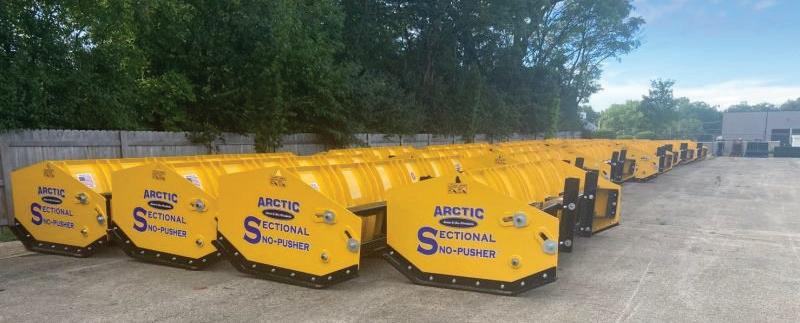





INDIANA NURSERY & LANDSCAPE NEWS • NOVEMBER/DECEMBER 2022 9 -
• • • • • - • • • • • - • • - • - • - - - •
• • - - • --
Plant Viruses and Why They Matter (continued from


page 8)
spread through virus infected pollen. When TRSV or ToRSV are involved, these are transmitted by nematodes. Since each of these viruses can infect several types of plant hosts, an infection in a nursery production area could lead to widespread infection. The Indiana Department of Natural Resources, Division of Entomology and Plant Pathology (DEPP) requires that roses coming into the State of Indiana be free of symptoms of viruses as outlined in Indiana Administrative Code 312 IAC 18-3-9, viruses of roses. Symptoms expressed by infected roses will vary depending upon the specific viruses composing the infection and the rose cultivar. Symptoms may include chlorotic line patterns, chlorotic ring spot patterns, distorted leaves, and mottled leaves. See Photo 1.
Viruses transmitted by insects and mites create a challenge given their vector mobility and opportunity to spread viruses among large numbers of plants while feeding. Wheat streak mosaic virus (WSMV) is vectored by the wheat curl mite (Aceria tosichella). WSMV can infect wheat, corn, and several grasses. It may be more difficult to control this virus when wheat and corn fields are surrounded by susceptible grasses or areas with wheat debris that can serve as additional sources of infection. The wheat curl mite also serves as a vector for High plains virus which can infect wheat and corn. Is it not uncommon for corn plants to be infected with more than one virus which often increases the severity of decline in the corn host. Maize lethal necrosis (MLN) is a disease of corn caused by coinfection of corn with more than one virus. Maize chlorotic mottle virus (MCMV) and one of several viruses from the family Potyviridae, such as Sugarcane mosaic virus, Maize dwarf mosaic virus, Johnsongrass mosaic virus or Wheat streak mosaic virus. The coinfection of these viruses can frequently cause plant death or severely reduced yield. It was first found in the United States in the late 70’s. Over the past 10 years, MLN has emerged in areas of East Africa, Southeast Asia, and South America as a significant concern.
WSMV is a concern for shippers of corn seed to certain countries like Argentina and South Africa. Freedom from this virus is a requirement for shipments entering these countries. In corn, infected leaves will show a yellowish mosaic pattern of parallel short streaks that become mottled yellow. Leaves may develop chains of small chlorotic ringspots. Plants may be stunted, and leaves may roll toward the mid-rib. See Photo 2.
Impatiens necrotic spot virus (INSV) is a virus of concern for greenhouse growers because it has an extremely large host list (hundreds of spe cies) and is spread by western flower thrips (Frankliniella occidentalis). Depending on plant susceptibility, insect population, and disease se verity, infected plants can eventually die. Just a few infected plants in a greenhouse along with uncontrolled thrips populations can result in widespread decline or make plants unmarketable. Symptoms may include wilting, chlorotic and necrotic ring spots on leaves, sunken spots on leaves, plant yellowing, stunting or poor flowering. It is important to remember that INSV, and all viruses, may not show the same type of symptoms in different types of plants. Western flower thrips also vector Tomato spotted wilt virus (TSWV) which has an extremely large host list. Control of the thrips population and elimination of weeds growing in and near greenhouses is important to controlling these viruses. See Photo 3.
There are a lot of viruses that can infect hosta plants, but Hosta virus X (HVX) is a virus that only infects hosta. It is spread through use of gardening and propagation tools that are contaminated with virus infected sap, or by division of infected plants. It was first detected in the United States in 2006. DEPP inspectors and inspectors in other states found this virus frequently in the following years. There was a lot of ef fort by plant health officials, universities, and hosta societies to educate growers on how to recognize hosta virus symptoms. State and national plant health officials also worked effectively to track international sources of this virus and communicate the
(Continues on page 12)
10 INDIANA NURSERY & LANDSCAPE ASSOCIATION • www.inla1.org
Photo 4 (above): Hosta Virus X on 'Sum and Substance' Hosta
Photo5 (below): Wheat Streak Mosaic Virus on Corn; Photos by Angela Rust, IN DNR
A CUT ABOVE THE REST.
This is your turf. Your work. Your reputation. Don’t just defend it. Grow it. Maximize it. Make it all yours with Bobcat® zero-turn mowers. They offer rugged durability and innovative features that work harder, last longer, and achieve a pristine quality of cut to give you a professional edge.


BOBCAT OF INDY 2935 Bluff Road
Indianapolis, IN 46225 317-787-2201
BOBCAT OF ELLETTSVILLE
700 East Temperance
Ellettsville, IN 47429 812-287-8042
bobcatofindy.com
BOBCAT OF ANDERSON 2075 East County Road 67 Anderson, IN 46017 765-643-4222
BOBCAT OF HOWARD COUNTY
613 W Main Street Greentown, IN 46936 765-628-2800
BOBCAT OF COLUMBUS 890 N National Rd Columbus, IN 47201 812-775-1470
BOBCAT OF INDY NORTH 4489 S Indianapolis Road Whitestown, IN 46075 317-769-4946
INDIANA NURSERY & LANDSCAPE NEWS • NOVEMBER/DECEMBER 2022 11
Bobcat ® and the Bobcat logo are registered trademarks of Bobcat Company in the United States and various other countries. ©2022 Bobcat Company. All rights reserved.
Plant Viruses and Why They Matter


(continued from page 10)
increasing problem of HVX incidence in the U.S. to suppliers. Finds of HVX have greatly decreased in Indiana, but it still occurs occasionally. Symptoms can include chlorotic or discolored ring spots, discolored areas along leaf veins, leaf puckering, green and yellow mottled areas, and death of leaf tissue. Symptoms vary between cultivars, and other viruses that infect hosta may show similar types of symptoms. See photos 4 & 5.
Japanese holly fern mottle virus (JHFMoV) is another example of a virus that only infects one type of plant. This virus is only known to occur on Japanese Holly Fern. This virus was first described in 2008 in the southeastern U.S. This virus spreads through grafting with infected plant material and through spores from infected plants. Symptoms can include yellow mottling, mosaic patterns, ringspots, and stunted growth. See Photos 6 & 7.
Tobacco ringspot virus (TRSV) is spread by dagger nematodes and some groups of insects. TRSV has a wide host range including many field crops and weed species. It is another virus of regulatory concern and countries such as Argentina require soybean seed imports be free of this pathogen. In soybeans symptoms may include stunting, shepherd’s crook of the terminal bud, poor pod development, spots on pods, distorted leaves, and discolored stem pith. See Photo 8.
Like the rose mosaic virus complex, the blackberry yellow vein disease (BYVD) complex refers to a grouping of one or more viruses that can be found individually or as mixed infections on the same plant. At least eleven viruses are known to be part of this disease complex, which was first observed in the southern U.S. around 2000. BYVD-associated viruses can be transmitted by pollen, nematodes, whiteflies, thrips, mealybugs, eriophyid mites, aphids, and, potentially, beetles. This makes controlling transmission of the disease very difficult. Symptoms often include chlorosis, ringspots, mottling, vein yellowing and oak leaf line patterns. Repeated years of infection result in a decline in yield and productivity after 5 to 7 years. Prior to the presence of this virus complex, blackberry production areas in the southeast remained productive for 20 years or more. More than 30 viruses have been identified in Rubus spp. See Photo 9.
Identifying a specific virus on a plant requires specialized testing. The ability of viruses to change and generate new molecular variation creates a complex testing challenge. There may be very little information available as to known viruses for particular plant hosts. Tests are usually available for common viruses with large host ranges. Sometimes the diagnosis is straightforward because the virus is a common one, for which tests are readily available. In other cases, nailing down the identity of a virus may involve the equivalent of a research project by a plant virologist and a team of technicians. In many cases diagnosticians agree that the plant is likely infected with a virus but attempts at identification become a dead end.
On occasion we get lucky…
An example of this is with an elderberry grower who had possible virus symptoms in a field. Testing for common viruses with a large host range all came back negative. The Purdue Plant and Pest Diagnostic Laboratory was able to find a plant virologist who was interested in the problem and suspected the plants were infected. The virologist was later able to identify virus particles and determined that a virus in the genus Carlavirus was present in symptomatic leaves. It is known that carlaviruses are mainly spread by aphids and through infected vegetative parts. They can also sometimes be spread by virus contaminated equipment. See Photo 10. How can we stop the introduction of viruses into our industry? Since viruses depend on the cellular structure of their host for reproduction, control is dependent on prevention of infection of the plant. Control of insect or mite populations is essential for management of viruses transmitted by them, as well as weed populations that may harbor them in and around growing areas. Preventative measures may include use of certified virus-free seed or vegetative stock. Genetically engineered virus resistant crops may provide opportunities for effective management of difficult to control diseases that could otherwise result in significant yield loss of food crops. For example, Papaya ringspot virus was devastating in Hawaii prior to the development of genetically resistant plants which allowed for successful management of the disease.
(Continues on page 14)
12 INDIANA NURSERY & LANDSCAPE ASSOCIATION • www.inla1.org
Photo 6 (above) & 7 (below): Japanese Holly fern mottle virus. Photos taken by Angela Rust, IN DNR


Plant Viruses and Why They Matter

(continued from page 12)
The world of plant viruses is complex and quite large. Viruses present a difficulty for plant health inspectors and plant disease diagnosticians. Resources to identify the specific virus infecting a plant may not be readily available. However, many common virus problems in greenhouses, nurseries and the private landscape can be identified. Identification of the specific virus or virus group is key to management of the disease because it provides information as to how the virus is transmitted.
If you suspect that you have virus infected plants in your nursery, greenhouse, or landscape, it’s recommended that you try to verify if the problem is a virus and get a possible identification. Samples can be submitted to the Purdue Plant and Pest Diagnostic Laboratory. Their website has instructions on how to send in plant samples at https://ag.purdue.edu/department/btny/ppdl/submitsamples/submit-sample.html


Nursery growers may also contact their local DEPP inspector for assistance in identification of possible virus problems. A map showing the DEPP inspector territories can be found at https://www.in.gov/dnr/entomology/files/ep-Inspector_Terrirories.pdf
About the Author
Angela Rust has been with the Indiana DNR, Division of Entomology and Plant Pathology as a Natural Resources Inspector since 1995. She worked in northeast Indiana based out of Allen County until 2000 and then has spent the last 22 years based out of Perry County in the southwest part of the state. Responsibilities within the division include nursery and dealer certifications, phytosanitary certifications, invasive species survey and regulation, and completion of environmental assessments for the gypsy moth program.
14 INDIANA NURSERY & LANDSCAPE ASSOCIATION • www.inla1.org
Photo 8 (above) Tobacco ringspot virus on soybean, Photo taken by Purdue Plant and Pest Diagnostic Lab
(Below) Photo 9. Blackberry yellow vein disease complex on blackberry. Photo taken by Angela Rust, IN DNR.
Photo 10 (below) Carlavirus symptoms on Elderberry Photo taken by Angela Rust, IN DNR.






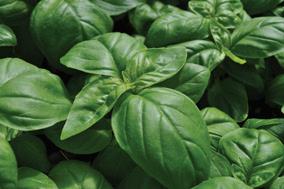









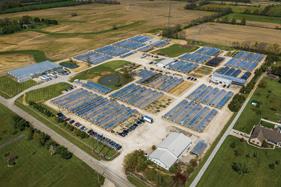


INDIANA NURSERY & LANDSCAPE NEWS • NOVEMBER/DECEMBER 2022 15 Specializing in Root Pruning Phone: (317) 994-5487 Toll free: (866) 766-8367 sales@woodywarehouse.com woodywarehouse.com 3339 West 850 North, Lizton, IN 46149 www.millcreekplants.com 800-948-1234 | SALES@MILLCREEKPLANTS.COM 15088 SMART-COLE ROAD | OSTRANDER, OH 43061 Annuals Combo Planters Grasses Hardy Ferns Herbs Peonies Perennials Proven Winners® Shrubs Vines GrowingHighQualityPlants,People,andRelationships DELIVERY SERVICES POP MATERIALS CUSTOM GROWING Serving Independent Garden Centers & Landscape Professionals Since 1978 7463 West Ridge Road P.O. Box 189 Fairview PA 16415 800.458.2234 Fax 800.343.6819 e-mail: info@FairviewEvergreen.com FairviewEvergreen.com
MEMBER PROFILE
Second Nature Landscape Management, Inc.

Since the inception in 2004, Second Nature Landscape Management Inc. has helped to develop and maintain some of the area’s most distinctive landscapes. Offering unparalled service and professional craftsmanship, Second Nature prides itself in being a detail oriented landscape service provider.

At Second Nature, we treat each customer differently. Each person comes to us with a different landscape need, a different budget and a different understanding of plants and landscape material. Second Nature was created because of an interest with plants and with people. Incorporating those interests and offering a service company to home owners and businesses, gives our company a personal connection with each customer. With a focus on perfection and customer service, we are able to offer our customers a sense of security knowing that their property is being well taken care of. In turn, it gives us great satisfaction.
Second Nature is a design/build/maintain company in Newburgh, IN. Kent Wilhelmus started the company in 2004. While he continued his 3rd. grade teaching career, he soon realized that teaching employees how to do landscaping became his priority. He left the teaching profession and pursued growing Second Nature Landscape Management. In the early years of the start up, Second Nature only offered maintenance services. From the help of Dan Fuquay at Aching Acres Landscaping, Kent was able to grow the landscape maintenance into a service provider that worked with high end residential customers. From that point, we’ve been able to grow slow and steadily by offering those clients more services.
What Sets Us Apart?
The internal culture is our key ingredient. Our team is awesome! We have a full time office secretary that answers the phone so our customers can actually speak to a person. Our design and sales lady takes the inquiries from the incoming phone calls and sells jobs. At that point our production manager schedules the job and gets materials in place where and when needed. Then, one of our 4 production crews implements the sale. We strive to follow the old adage “the delivery is more important than the sell.”
Being Cohesive
Team Nature: Team work makes dream work! We have weekly team meetings on Thursday mornings. They are the number one key to our success. Those consist of job board reviews, upcoming sales/jobs, and monthly numbers/goals/sales.
We also do an education section usually using material from the Indiana Accredited Horticulturalist material and outlines best practices. We give each employee a time during the meeting to share anything from personal stuff to how jobs are going or to ask questions. We have a weekly lunch drawing which allows the employee the opportunity to go to lunch with Kent.
16 INDIANA NURSERY & LANDSCAPE ASSOCIATION • www.inla1.org
Kent Wilhelmus
(Continues on bottom of next page)
Second Nature Landscape Team
Legislative Update on DACA
Update provided by The Corydon Group for IOMA members
We want to alert you to a federal issue that is making its way through the court system that could tremendously impact our industry. The concern stems from a Federal Court Case challenging an immigration policy in place for ten years. In 2012 The US Department of Homeland Security, under President Obama, implemented a policy of not deporting or detaining undocumented youth sixteen or younger. The policy, known as the Deferred Action for Childhood Arrivals (DACA) program, gave recipients temporary legal status and work authorization. Many early DACA recipients are working adults, with a significant percentage working in our industry. If the courts rule against the policy, the recipients will likely lose their legal status and legal work authorizations.
To make DACA permanent, congress must pass a law. Without legislation, nationally, over 700,000 current DACA recipients and another 250,000 eligible will lose their ability to work legally. There are around 9,000 DACA recipients in Indiana. With the current workforce shortage we are experiencing, removing potentially thousands from the pool of employable people could be devastating.
We are working on a project to encourage Indiana U.S. Senator Todd Young to support legislation to maintain the status of these individuals, allowing them to continue to work. We are working with representatives from the major lawn and landscaping associations (IPLLA, IICC, INLA, ILA) and the Indiana Outdoor Management Alliance (IOMA) to write Op-Eds and Letters to the Editor, which you may see in your newspaper, and letters directly to Sen. Young from each association. However, what really interests elected officials is letters from business owners like you. Writing and emailing a letter couldn’t be easier, and we have provided a guide below to help.
• Address the Senator – Dear Senator Young,
• Introduce yourself and your business
• How long you’ve been in business
• Add any other unique things about your business
• Discuss the struggles you have had in finding and keeping employees or other related concerns or occurrences that further demonstrate your concern and that it is for those reasons that you are asking him to support making DACA status permanent as part of any immigration reform.
• Thank him for his time and consideration.
• Sign the letter
• Put the letter on your letterhead
• Email the letter to Andrew Kossack in Senator Young’s office Andrew_Kossack@Young.Senate.Gov and BCC in email swolff@ thecorydongroup.com
Thank you in advance for your consideration.
Rick Haggard, INLA Executive Director
Continued from Page 16; Member Profile
Our weekly team meetings and discussions during those are a big driver in our internal culture and have a ripple effect into the job sites. If for some reason we have to miss a team meeting, things just aren’t the same that week.
Second Nature Experience:
During each team meeting or daily load list meetings we hammer the concept of the “Second Nature Experience.” Messages are cenKtered around the concept of protecting our company image and brand. We stress things such as:
• Being professionals in every aspect of the green industry
• Being professional drivers on the road
• Speaking to customers with professional language and knowledge; as well as other crew members.
• "No-No" Words
• Being educated about best practices in the green industry and about our products we sell
• Be a part of associations/organizations. (The INLA is a great place to start!)
As we all know: we face many challenges in our industry. I won’t tell you them as we all know them - but I will tell you one thing: Protect Your Customers!
Our best approach to doing this is by following these three principles:
*weekly team meetings with employee input
*offer a better service than others
*correct anything that goes wrong and do everything you can to keep them happy!
Article written by Kent Wilhelmus of Second Nature Landscape
INDIANA NURSERY & LANDSCAPE NEWS • NOVEMBER/DECEMBER 2022 17
COMMUNITY
Annual Awards Program
Criteria and Application Forms for Awards of Excellence Special Achievement Awards
Awards of Excellence
CATEGORIES:
For some categories, you must consider the dollar value of the project. All direct costs of labor, material, equipment, subcontractors, etc. plus overhead and profit figures in the dollar value.
Residential Landscape Design/Build
A. Under $50,000
B. Over $50,000
Landscape projects for single family or duplex residences. (Apartment projects and similar multi-family buildings must be entered in the Commercial category.)
Commercial Landscape Design/Build
A. Under $39,000
B. Over $39,000
Includes commercial sites or institutional projects as well as multi-family residential projects.
Hardscape Residential Design/Build
A. Under $50,000
B. Over $50,000
Hardscape projects for single family or duplex residences. (Apartment projects and similar multi-family buildings must be entered in the Commercial category.)
Hardscape Commercial Design/Build
A. Under $39,000
B. Over $39,000
Includes hardscape projects for commercial sites or institutional projects as well as multi-family residential projects.
Lighting
Open category. This can/could include landscape lighting, architectural lighting, Christmas décor lighting; residential or commercial application; no dollar amount tied to this category.
Landscape Maintenance
Open category. Winning company would have provided landscape maintenance to a previously installed landscape. Can be residential, commercial or industrial setting. No dollar amount tied to this category.
Special Projects
Any non-conforming horticulture/landscape project of special merit or unusual character which does not belong in one of the other categories. Project examples: water features, garden centers, erosion control, interiorscapes, restoration, etc.
PURPOSE: The Awards of Excellence, given annually, recognizes those firms that have enhanced the Indiana environment with creativity and beauty through landscaping and horticulture.


ELIGIBILITY:
• All INLA active members (except award committee members).
• A previous winning project can NOT be re-entered in the same category.
• Non-winning project may be re-entered in same category.
• All projects must include a completed entry form, written description and photos of the project (hard copy and electronic preferred), and entry fee.
ENTRY FEE: $100 per project submission
ENTRY FORMAT:
Each project must include:
Completed entry form
Entry fee ($100), made payable to the Indiana Nursery & Landscape Association
Project submission in both printed and electronic format that includes a written description, photos, and if available, landscape plans of the project.
Written description of project:
A descriptive text (500 words maximum) which explains the background for the project and takes into account potential problems and solutions, cost considerations, budget, and any constraints. Text MUST list the client’s criteria for the project and budget considerations. Descriptive text should be saved as a Word document or a PDF with a filename that includes the project name only. Do not include your company name in the filename. Please include the project description in both the printed and digital submissions.
Photos of project:
– Print submission: Include a minimum of 10 and a maximum of 15 images. Please remove any company logos contained in the photos (such as on shirts or trucks) before submitting. If any photo contains your company logo that photo will not be forwarded to the judges.
– Electronic submission: Include a minimum of 10 and a maximum of 15 digital images, saved as JPEG files. Label images as 01_project name.jpg, 02_project name.jpg, etc. in the order you wish the judges to view your images. Do not list your company name in the filename. Please submit at least 3 images at high resolution (300 dpi or about 3 MB) for use in the INLA magazine and for display purposes. The complete electronic submission (photos and written description) may be submitted on CD or thumb drive.
Landscape plans
Submit both electronic and printed versions if available. Please remove any company logos/names.
Note: Incomplete entries or nonconforming entries will not be considered for awards.
SUBMISSION
DEADLINE: DECEMBER 1
(All entry materials, fees, and forms due by this date.)
18 INDIANA NURSERY & LANDSCAPE ASSOCIATION • www.inla1.org INDIANA NURSERY & LANDSCAPE NEWS • SEPTEMBER/OCTOBER 2022 13
Indiana Nursery and Landscape Association’s
Awards of Excellence ADDITIONAL INFORMATION
What Do the Winners Receive?
• A plaque for winner and their client and a special presentation at the Indiana Green Expo.
• A cover feature on the Indiana Nursery & Landscape News.
• Posting on the INLA website (www.inla1.org) complete with photos for one year.
• A professional press release about their award.
Judging Criteria
Entries will be judged by submitted material only. Judging will be guided by the following considerations:
Design/Build Categories
• Overall excellence of design, selection, and appropriateness of materials.
• Degree of difficulty
• Installation techniques
• Craftsmanship
• Execution of construction details
• Maintenance considerations
• Finished appearance of the project as viewed through the use of photographs, images and presentation.
Special Projects Category
• Uniqueness
• Creativity
• Overall project will be judged on how well the project met the client’s criteria or needs.
• Overall appearance of the project as viewed through the use of photographs, images, and presentation.
Consistency will be maintained in evaluation between projects within a category. Type, size, or cost of project will not be criteria for judging. Feedback will be provided for nonwinners should they request it.
Award of Excellence Content Suggestions
• Entries should be comprised of a written description along with photos and optional plans, sketches, or graphical material.
• Photos//text/plans/CDs/thumb drives, etc. must not include the entrant’s name. The entrant’s name should only be included on the entry form. Entries are numbered to protect anonymity.
• Photos must be included in print and on digital submission (CD or thumb drive)
• The more description and detail given increases your chances.
• Keep in mind that the overall goal of the contest is to promote high standards in landscape projects.
www.inla1.org
AWARD OF EXCELLENCE ENTRY TIPS
• The production of the Award of Excellence entry is a team effort.
• Take a lot of pictures so you can include 10 to 15 photos in your entry.
a) Different seasons
b) Different angles
c) Horizontal — for use in a 3-ring binder with sheet protectors
d) Vertical — Indiana Nursery & Landscape News might need one for the magazine cover, so make it a stunning one!
e) Remember: Block out company name, phone, address, owner(s) personal pictures.
• If project appears in the newspaper, ask publication to email a copy to you.
• Each picture should have its own description including plant list, unique requirements of the job, a little history, challenges, and solutions.
• Create it as a sales tool! And remember to have fun with it!
STUCK ON HOW TO PUT IT TOGETHER?
INLA Award of Excellence presentation consultations available by contacting the INLA office — 317-889-2382.
All photos and entries become the property of the Indiana Nursery and Landscape Association and may be returned.

INDIANA NURSERY & LANDSCAPE NEWS • NOVEMBER/DECEMBER 2022 19 14 INDIANA NURSERY & LANDSCAPE ASSOCIATION • www.inla1.org
Awards of Excellence ENTRY FORM
This program is designed to reward and recognize those firms that have enhanced, through landscaping and horticulture, the environment in the state of Indiana through creativity and beauty.
Please read guidelines before completing application form.
ONE FORM PER CATEGORY • DEADLINE DECEMBER 1
1) PROJECT INFORMATION — PLEASE PRINT IN BOLD
Project Name:
Project Location:
Name of Individual(s)/Firm:
Address:
City/State/Zip:
Phone: Fax:
Email:
Role in Project:
2) CLIENT’S AUTHORIZATION:
Name (Print)
Signature Date:
Applicant’s Name (Print): Date:
Applicant’s Signature:
3) PLEASE SELECT THE APPROPRIATE CATEGORY AND SUBGROUP (if applicable) YOU ARE ENTERING:
Residential Landscape Design/Build
__ A. Under $50,000
__ B. Over $50,000
____ Commercial Landscape Design/Build
__ A. Under $39,000
__ B. Over $39,000
Hardscape Residential Design/Build
__ A. Under $50,000
__ B. Over $50,000
____ Hardscape Commercial Design/Build
__ A. Under $39,000
__ B. Over $39,000
Check if we may feature your entry at the Indiana Green Expo — even if you do not win.


www.inla1.org
DEADLINE: December 1
Lighting Landscape Maintenance
____ Special Projects
4) MAIL YOUR ENTRY: Mail this form, along with the written description of entry, photos, electronic submission of your project, and the $75 entry fee (per project, per entry) to:
Indiana Nursery and Landscape Association
7915 S. Emerson Ave., Suite 247, Indianapolis, IN 46237
Phone: 800-443-7336 • www.inla1.org
Deliveries must be made by appointment only. Thank you.
5) PAYMENT: Entry Fee $100/project
Make check(s) payable to: Indiana Nursery & Landscape Association (INLA) or Pay by credit card (Master Card, Visa, or Discover only). Please provide the following information printed clearly.
Name on Card:
Card No.: Exp. Date: 3-Digit PIN:
Billing Address/City: Zip Code:
20 INDIANA NURSERY & LANDSCAPE ASSOCIATION • www.inla1.org INDIANA NURSERY & LANDSCAPE NEWS • SEPTEMBER/OCTOBER 2022 15
Special Achievement Awards
Indiana Nursery and Landscape Association members are encouraged to submit suggestions for these three very special awards—Nursery & Landscape Achievement Award, Award of Merit, and the Indiana Nursery & Landscape Employee of the Year. Please take time to recognize the many deserving professionals for their contributions to our industry!
Nursery & Landscape Achievement Award
To be awarded annually to an individual with good standing in the industry who has given freely of his/her time for the strengthening of the green industry in Indiana. Nominations are voted on by the Awards Committee.


Special Achievement Awards NOMINATION FORM
Award of Merit
To be given annually to a business, institution, job, or individual which the INLA feels has contributed significantly to our industry. Nominations are voted on by the Awards Committee.
Employee of the Year
To be given annually to an individual on staff at an INLA member business where he/she has significantly contributed to the growth of that business and its standing in the community. Five years minimum service required. Nominations are voted on by the Awards Committee. Please provide information about the nominee and his/her contributions.
DEADLINE: December 1
These awards are the most important awards presented by the Indiana Nursery and Landscape Association. Please take time to submit deserving candidates who meet the criteria listed above and the reason for nominating them.
Email or mail your nomination to the INLA office by December 1.
NURSERY & LANDSCAPE ACHIEVEMENT AWARD
AWARD OF MERIT
INDIANA NURSERY & LANDSCAPE EMPLOYEE OF THE YEAR
SUBMITTED BY:
Your Name:
Deadline: December 1
Email completed form to the INLA at: info@inla1.org
• Questions: 317-889-2382
Mail to: Indiana Nursery & Landscape Association, 7915 S. Emerson Ave., #247, Indianapolis, IN 46237
INDIANA NURSERY & LANDSCAPE NEWS • NOVEMBER/DECEMBER 2022 21 16 INDIANA NURSERY & LANDSCAPE ASSOCIATION • www.inla1.org
John Deere 317G
Compact Track Loader
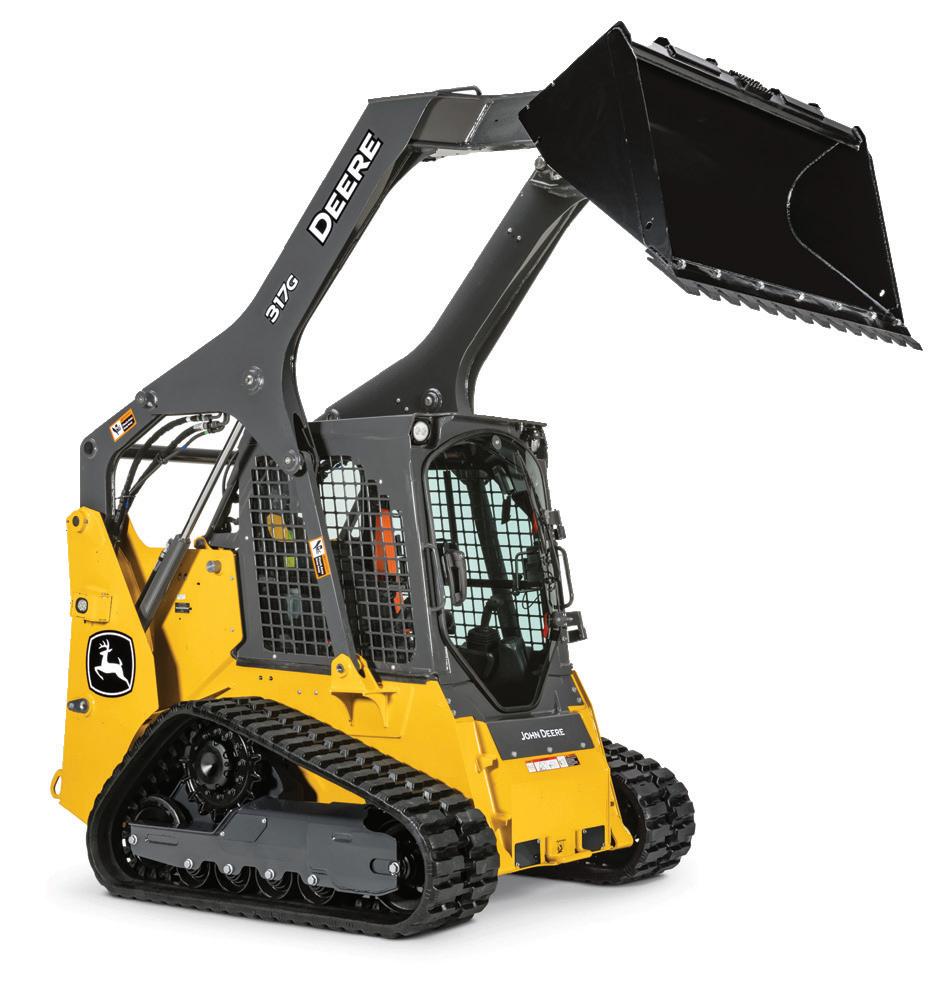
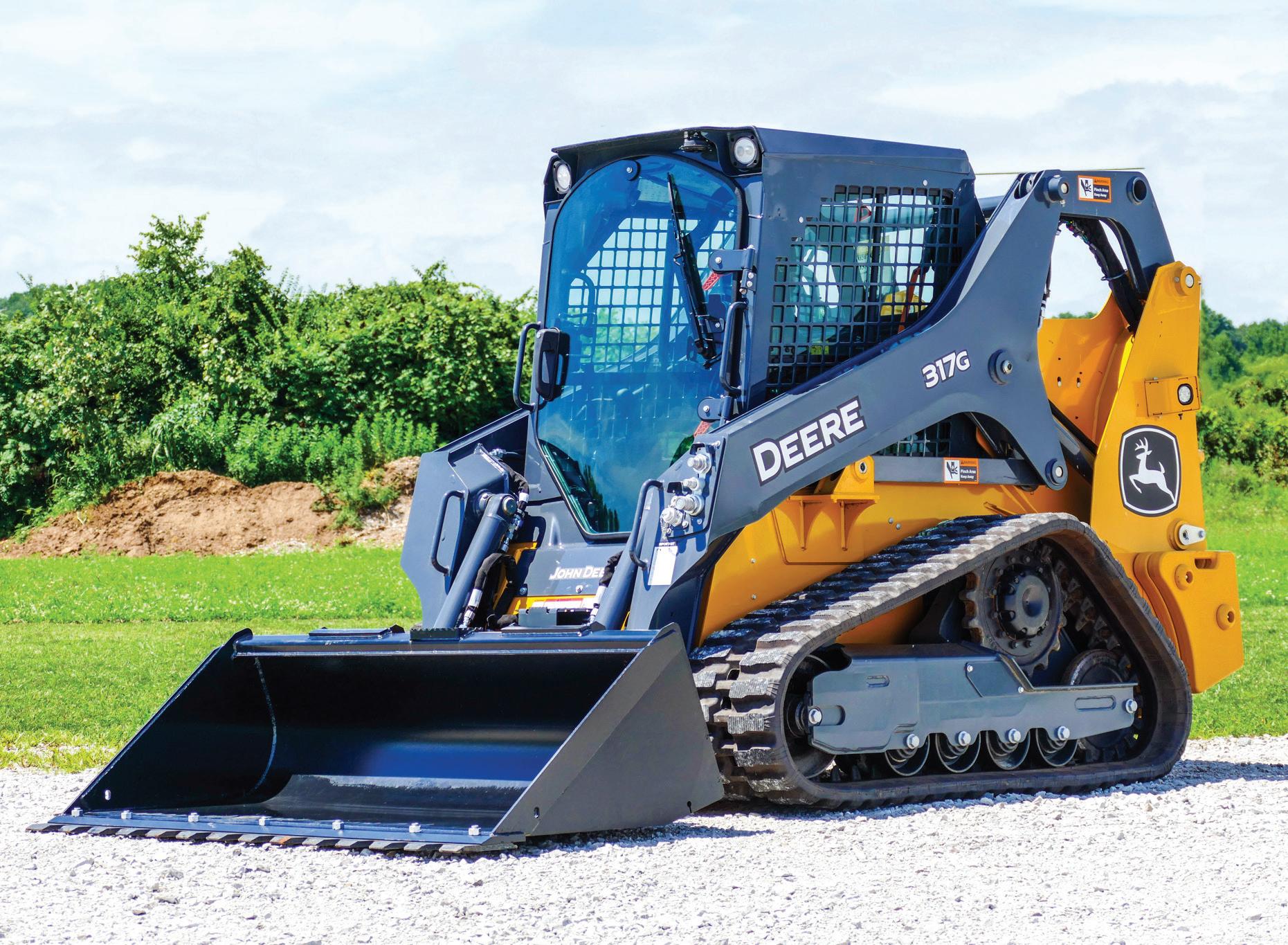
• Rated Operating Capacity: 965 kg (2,125 lb.)
• Gross Horsepower: 48.5 kW (65 hp)
• Net Horsepower: 45.6 kW (61 hp)
• Operating Weight: 3824 kg (8,423 lb.)
22 INDIANA NURSERY & LANDSCAPE ASSOCIATION • www.inla1.org *Subject to approval from John Deere Financial. Some restrictions apply. See Reynolds Farm Equipment for details. ATLANTA, IN 317-758-4116 FISHERS, IN 317-849-0810 LEBANON, IN 765-482-1711 MOORESVILLE, IN 317-831-1450 MUNCIE, IN 765-289-1833 Equipment | Service | Parts: ReynoldsFarmEquipment.com ReynoldsFarmEquipment.com THE EQUIPMENT YOU NEED TO GET THE JOB DONE.
DESIGNED FOR THE WAY YOU WORK AND LIVE.
With a comprehensive lineup of sub-compact and compact tractors, Bobcat brings its unmatched quality to your farm, ranch, acerage or business. Open up new possibilities and do more than ever with legendary Bobcat performance. You were born to accomplish more - and so was Bobcat.

BOBCAT OF INDY 2935 Bluff Road Indianapolis, IN 46225 317-787-2201
BOBCAT OF ELLETTSVILLE 700 East Temperance Ellettsville, IN 47429 812-287-8042
bobcatofindy.com
BOBCAT OF ANDERSON 2075 East County Road 67 Anderson, IN 46017 765-643-4222
BOBCAT OF HOWARD COUNTY 613 W Main Street Greentown, IN 46936 765-628-2800
BOBCAT OF COLUMBUS 890 N National Rd Columbus, IN 47201 812-775-1470
BOBCAT OF INDY NORTH 4489 S Indianapolis Road Whitestown, IN 46075 317-769-4946
INDIANA NURSERY & LANDSCAPE NEWS • NOVEMBER/DECEMBER 2022 23
Bobcat ® and the Bobcat logo are registered trademarks of Bobcat Company in the United States and various other countries. ©2022 Bobcat Company. All rights reserved.
Legislative Update on H-2B Cap
UDHS to Supplement H-2B Cap with Nearly 65,000 Addt'l Visas for FY 2023
WASHINGTON—Today the Department of Homeland Security (DHS), in consultation with the Department of Labor (DOL), announced that it will be issuing a regulation that will make available to employers an additional 64,716 H-2B temporary nonagricultural worker visas for fiscal year (FY) 2023, on top of the 66,000 H-2B visas that are normally available each fiscal year. By making these supplemental visas available at the outset of the fiscal year, which began on October 1, 2022, DHS is acting swiftly to address employers’ needs for additional seasonal workers. At the same time, DHS and DOL are working together to institute robust protections for U.S. and foreign workers alike, including by ensuring that employers first seek out and recruit American workers for the jobs to be filled, as the visa program requires, and that foreign workers hired are not exploited by unscrupulous employers. To strengthen these efforts, DHS and DOL also announced the creation of a new White House-convened Worker Protection Taskforce, as described below.
“The Department of Homeland Security is moving with unprecedented speed to meet the needs of American businesses,” said Secretary of Homeland Security Alejandro N. Mayorkas. “At a time of record job growth, this full year allocation at the very outset of the fiscal year will ensure that businesses can plan for their peak season labor needs. We also will bolster worker protections to safeguard the integrity of the program from unscrupulous employers who would seek to exploit the workers by paying substandard wages and maintaining unsafe work conditions.”
The H-2B supplemental includes an allocation of 20,000 visas to workers from Haiti and the Central American countries of Honduras, Guatemala, and El Salvador. This advances the Biden Administration’s pledge, under the Los Angeles Declaration for Migration and Protection, to expand legal
pathways as an alternative to irregular migration. This is also consistent with the joint commitment President Biden and President López Obrador of Mexico made in July to work together to broaden opportunities for seasonal and circular labor and ensure that migration is a choice and not a necessity. This is one of many ways that the United States and Mexico are partnering to manage migration and fuel economic growth, as discussed in the bilateral working group on labor mobility.
American businesses in industries as varied as hospitality and tourism, landscaping, seafood processing, and more depend on seasonal workers to meet demand from consumers. The supplemental visa allocation will address the need for seasonal workers in areas where too few U.S. workers are available, helping contribute to the American economy.
In addition to the 20,000 visas reserved for nationals of Haiti and the Northern Central American countries, the remaining 44,716 supplemental visas will be available to returning workers who received an H-2B visa, or were otherwise granted H-2B status, during one of the last three fiscal years. The regulation will allocate these remaining supplemental visas for returning workers between the first half and second half of the fiscal year to account for the need for additional seasonal workers over the course of the year, with a portion of the second half allocation reserved to meet the demand for workers during the peak summer season.
The H-2B program permits employers to temporarily hire noncitizens to perform nonagricultural labor or services in the United States. The employment must be of a temporary nature, such as a one-time occurrence, seasonal need, or intermittent need. Employers seeking H-2B workers must take a series of steps to test the U.S. labor market. They must also certify in their petitions that there are not enough U.S. workers who are able, willing, qualified, and available to perform the temporary work for which they seek a prospective foreign worker. In addition, employers must certify that employing H-2B workers will not adversely affect the
wages and working conditions of similarly employed U.S. workers.
DHS and DOL acknowledge that H-2B workers face structural disincentives to reporting or leaving abusive conditions, and often lack power to exercise their rights in the face of exploitative employment situations. The departments emphasize the importance of protecting all H-2B workers from exploitation and abuse, and of ensuring, consistent with law, that employers do not refuse to hire or appropriately recruit U.S. workers who are able, willing, qualified, and available to perform the temporary work. The forthcoming temporary final rule implementing this allocation will feature several provisions to protect both U.S. and H-2B workers. For example, DHS will subject employers that have committed certain labor law violations in the H-2B program to additional scrutiny in the supplemental cap petition process. This additional scrutiny is aimed at ensuring compliance with H-2B program requirements and obligations.
To address these issues more broadly, the departments announce the creation of the H-2B Worker Protection Taskforce (“Taskforce”). Convened by the White House, the Taskforce will focus on (1) threats to H-2B program integrity, (2) H-2B workers’ fundamental vulnerabilities, including their limited ability to leave abusive employment without jeopardizing their immigration status, and (3) the impermissible use of the program to avoid hiring U.S. workers. The departments will assess a variety of policy options to address these issues and will provide an opportunity for relevant stakeholders to offer input. The work of the Taskforce will build on ongoing efforts in both departments to reform the H-2 temporary visa programs. In the coming months, DHS also plans to issue a notice of proposed rulemaking relating to the H-2 programs, which will incorporate policies that strengthen protections for H-2 workers.
Additional details on H-2B program safeguards, as well as eligibility and filing requirements, will be available in the temporary final rule and the Cap Count for H-2B Nonimmigrants webpage.
24 INDIANA NURSERY & LANDSCAPE ASSOCIATION • www.inla1.org COMMUNITY

INDIANA NURSERY & LANDSCAPE NEWS • NOVEMBER/DECEMBER 2022 25
Congratulations
New Indiana Accredited Horticulturist (IAH)

INITIAL IAH
David Amos, NCCF, Spencer, IN
Joseph Ater, NCCF, Palmyra, IN
Vincent Boddie, NCCF, Richmond, IN
David Borton, NCCF, New Castle, IN
Dillon Brook, NCCF, Logansport, IN
Marvin Buffkin, NCCF, New Castle, IN
Luis Campos, NCCF, New Castle, IN
James Colter, NCCF, Greenfield, IN
Jerry Danielson, NCCF, New Castle
Jennifer Hartley, Vincennes University, Vincennes, IN
David Hawn, NCCF, New Castle, IN
Clint Hess Jr., NCCF, Hudson, IN
Ernest Keith, Jr. NCCF, Palmyra, IN
Michael Kemp, NCCF, New Castle, IN
Ronald Lawrence, NCCF, New Castle
James Moland, NCCF, Winchester, IN
Scott Morris, NCCF, New Castle, IN
Jeffery Morris, NCCF, New Castle, IN
Julio Pina, NCCF, New Castle, IN
Jody Shoemaker, NCCF, New Castle, IN
Certification and Education
George Brenn’s IAH Study Guide
Text: © George Brenn
George Brenn, Four Seasons Landscaping Nursery, created this study guide to help teach the material covered in the IAH Manual. His intentionw as to assist those trying to master the subjects within the manual.
Chapter 4 – Herbaceous Ornamental Plants
Herbaceous Plants = plants having stems that do not thicken with age or become woody. They generally die to the ground each winter but may remain alive underground
Annual = plant completes entire life cycle (from seed to flower producing seed) in 1 growing season. Many landscape annuals bloom continuously from late Spring until frost. Ageratum, Begonias, Coleus, Impatiens, Marigold, Petunia, Verbena, annual Geranium (=Pellargonium)
Biennial = plant requires 2 growing seasons to complete life cycle: grows leaves & stems 1st year, goes dormant 1st winter, the produces flowers & seeds in 2nd year, then dies. Generally have limited period of bloom, usually 1 to 3 weeks. Lunaria, Dianthus barbatus, some Hollyhocks & Foxgloves
Perennial = plants that live for more than 2 growing seasons. Blooming period varies greatly from 1 – 10 or more weeks. Life span varies from 2 – 3 years to indefinite. Asters, Bergenia, Coreopsis, Dicentra, Echinacea, Filipendula, Geranium, Hosta, Daylilies, Black-Eyed Susan (= Rudbeckia)
Hardy Bulbs = perennials that form underground parts to store food and buds for next year’s growth. Allium, Crocus, Daffodils, Hyancinth, Tulips, Muscari, Scilla, Narcissus
Ornamental Grasses = usually perennial, but may be annual. Not turf-forming, but have grasslike habit.
Function of Herbaceous Plants:
• Annual flowers & foliage add maximum COLOR and make good “filler plants”
• Perennials add color, texture and form
• Bulbs add unique early spring color before annuals can be planted outdoors: some bloom in summer
• Orn. Grasses add Form, Texture and Seasonal Interest (especially winter), make focal points, screening
Culture for Annuals
• Site Selection – most annuals need full sun and well-drained soil. Soil preparation is of critical importance.
• Annuals are heavy feeders because they grow so rapidly; Controlled Release Fertilizers (CRF’s) provide season-long nutrition
• Containers – nicely suited for annuals, but MUST have drain holes: use soil-less planting mix.
• Plant annuals after danger of frost is past (mid-May): Pansies are exception and will tolerate frost
• Pinch your plants when planting to cause them to develop lateral branching (chapter 1)
• Mulch minimizes weeds, conserves moisture, keeps soils cooler, looks better than bare soil
• Deadheading = removal of spent flower heads, helps appearance and prolongs bloom
• Weed control: start clean and use Preen (Treflan 1.47G pre-emergent herbicide: broad label)

Culture for Perennials
• Site Selection - select plants with similar site requirements to be planted together; note that some perennials tolerate shade while others require shade; there is a difference! Soil drainage, aeration & moisture retention are basic considerations; worst enemy is “Winter Wet”
• Hardiness – microclimates and extra mulching for winter may enable less hardy species to survive. Heat hardiness: Lupines and Delphiniums tolerate our winters, but are better-suited to cooler summers
26 INDIANA NURSERY & LANDSCAPE ASSOCIATION • www.inla1.org
November/December 2022
• Pruning – some perennials benefit from mid-season pruning (cutting back) to control floppiness
• Site preparation – start clean (Glyphosate) and prepare soil to 12” depth or more; IF soil is very heavy, add peat or compost, rototill & berm slightly, or consider raised beds or mounds
• Fertilizer – add to soil during preparation, especially P (phosphorous); after established, feed with 5-10-5 @ 1 lb / 100 sq.ft. in early spring and again 6-8 weeks later@ 1 lb / 100 sq.ft. in early spring and again 6-8 weeks later Planting depth – crown of perennial plant should be at or just below soil surface for most species. Be aware of planting too deeply.
• Staking or Support: Peonies, Baptisia & others may need staking or other supports to avoid flopping
• Dividing:: almost all perennials require division eventually (except some like Peonies, Baptisia, Poppies). Dividing is best done when plants are not in bloom. IF done in summer, best to cut back tops.
• Maintenance – usually quite easy, best done in late fall by removing dead tops. Easiest time to mulch is late fall through very early spring before perennials emerge from dormancy.
Culture for Bulbs
• Site Selection – most bulbs need full sun. However, many spring bloomers complete growth before trees and shrubs leaf out, so areas shady in summer may be OK for bulbs. Avoid placement where soil retains excess moisture as most bulbs will ROT in wet soils.
• Vernalization – spring flowering bulbs require cold temps before they will bloom
• Planting depth – varies with species & size of bulbs. Spacing is also important: Daffodils expand
• Naturalizing – some bulbs spread enough to naturalize an area (Crocus, Muscari, Scilla)
• Tip: consider digging a pit to proper depth, placing bulbs, then backfilling over bulbs with prepared soil
• Post-Bloom Foliage is best left alone for 4 – 6 weeks after bloom (recharging via photosynthesis)
• IF lots of foliage, but fewer & fewer flowers, bulbs have become too crowded & need to be thinned
Culture for Ornamental Grasses
• Site Selection – most ornamental grasses require full sun, some will tolerate partial shade.and are remarkably tolerant of adverse soil conditions.
• Most ornamental grasses are “clump-forming”
• Spacing – clumps expand over time, so allow sufficient room for their spread. ALSO, some varieties are quite vertical (Calamagrostis, Panicum), while others are decidedly vase-shaped (Miscanthus).
• Fertilization – avoid excessive fertility: makes plants grow too fast, have weaker stems, & become floppy
• Maintenance – annual cut-back needs to occur prior to new growth emergence. Electric hedge shears are great for this; best done late winter / early spring, but can be done in fall (loses winter interest).

• Division – need varies greatly among species: Calamagrostis can stay for 7 – 8 years; some Miscanthus varieties require division after only 4 years. Best to dig up entire clump, make 4 to 8 divisions and replant one. Spading fork is excellent tool for digging up grasses; saw or ax for making divisions.
• Beware: the inflorescence (seed heads) of some species are notorious for reseeding into lawns, and when mown, ornamental grasses shred and are quite unsightly.
INDIANA NURSERY & LANDSCAPE NEWS • NOVEMBER/DECEMBER 2022 27
IAH Quiz
Each quiz will be worth a .5 (one-half) CEU!
The Indiana Accredited Horticulturist Committee is pleased to provide you an opportunity to earn CEUs (continuing education units) in each issue of the Indiana Nursery and Landscape News.
The IAH quiz offered in each issue can be completed by anyone who is an “Active” (current) IAH (initial or masters).
Each quiz will be worth a .5 (onehalf) CEU (continuing education unit) for the completion of the bi-monthly quiz with a pass rate of 80%. Over a 2-year period, you could earn up to 6 CEUs if you take and pass every quiz!
The INLA office will grade the quiz. Questions and answers have been provided by the IAH committee. Thank you and good luck studying!
The Indiana Accredited Horticulturist Committee Co-Chairs
- George Brenn, Four Seasons Landscaping Nursery

- Gabriel Gluesenkamp, Designscape Hort Services Committee Members
- Brian Bunge, Twixwood Nursery
- Wayne Gruber, Niemeyer’s Landscape Supply
- Jim Messmer
- Melissa Mravec, Allen Landscape
- Jodie Overmyer, Marshall County Soil and Water
IAH QUIZ: NOVEMBER/DECEMBER 2022
Due: December 31, 2022
Complete the quiz and email or mail to INLA by the deadline above. Be sure to write your name, IAH number, and contact information on the bottom of the quiz when submitting.
1. The location of leaf attachment to a stem is called a __________.
2. The most basic “building blocks” of a plant are the __________.
3. Water vapor moves out of a leaf through the __________ and this process is known as _________.
4. Growth of lateral buds behind a shoot’s tip is controlled by an auxin and this phenomenon is called _________ ___________.
5. Roots serve several functions on a plant, including anchoring, ________ and ________ .
6. The primary function of leaves is to ___________ ______ by converting sunlight, Carbon Dioxide and water thru a process known as _____________.

7. Plant stems contain the vascular system, comprised of the ________ and ________.
8. Flowers are the _______ organs of the plant.
9. Root hairs absorb ________ , ___________ and ________ from the soil.
10. Cell division and expansion occur in the _________.
Name:
IAH No.:
Phone:
Email: Send answers to: info@inla1.org -or- mail to INLA, 7915 S. Emerson Ave., #247, Indianapolis, IN 46237
28 INDIANA NURSERY & LANDSCAPE ASSOCIATION • www.inla1.org
The savings and rebates The savings and rebates offered through Service First offered through Service First Processing will Processing will MORE MORE tthen hen cover your annual dues. cover your annual dues.

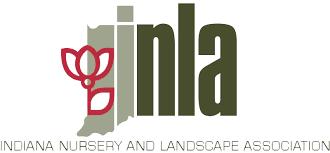

INDIANA NURSERY & LANDSCAPE NEWS • NOVEMBER/DECEMBER 2022 29
G E T M O N E Y B A C K T H R O U G H G E T M O N E Y B A C K T H R O U G H T H E I N L A C R E D I T C A R D T H E I N L A C R E D I T C A R D P R O C E S S I N G R E B A T E P R O C E S S I N G R E B A T E P R O G R A M P R O G R A M S e r v i c e F i r s t P r o c e s s i n g a n d S e r v i c e F i r s t P r o c e s s i n g a n d T h e I n d i a n a N u r s e r y a n d L a n d s c a p e T h e I n d i a n a N u r s e r y a n d L a n d s c a p e A s s o c i a t i o n h a v e a " M e m b e r s O n l y " c r e d i t c a r d p r o c e s s i n g r e b a t e A s s o c i a t i o n h a v e a " M e m b e r s O n l y " c r e d i t c a r d p r o c e s s i n g r e b a t e p r o g r a m . p r o g r a m . Members-Only Members-Only Special Special Members get an average savings of $6,830 or 16% AND 10% Annual Rebate ADDITIONAL BENEFITS FREE FREE Loaner equipment Loaner equipment HELP LINE HELP LINE With Dedicated Representatives With Dedicated Representatives REPORTING REPORTING Free "AccessOne" online reporting Free "AccessOne" online reporting Trial Period Trial Period 60 Day Trial Period & 90 Day Pilot 60 Day Trial Period & 90 Day Pilot PProgram rogram C O N T A C T U S T O D A Y ! C O N T A C T U S T O D A Y ! 866-372-5551 www.SFProcessing.com/INLA
LOOKING TO PURCHASE EXISTING BUSINESS
Landscape, Lawncare, Tree and Shrub Care, or Irrigation Business in Indianapolis or surrounding counties.

Call Jim Calvin, Calvin Landscape 317-247-6316
INLA Job Board at www.inla1.org
FREE JOB POSTING for INLA members!
Positions are open to any who wish to respond!
To post an open position at your company, please email info@inla1.org and send the job description along with how to apply.
Questions? Contact Rick Haggard, 765-366-4994
30 INDIANA NURSERY & LANDSCAPE ASSOCIATION • www.inla1.org Amigos Recruiting ................................................................6 jim@calvinlandscape.com Blue Grass Farms of Indiana inside front cover www.bluegrassfarms.net Bobcat of Indy .......................................................... 3, 11, 23 www.bobcatofindy.com Bowling Nursery 27 sales@bowlingwholesale.com Brehob Nurseries, LLC outside back cover www.brehobnursery.com Calvin Landscape ...............................................................30 www.calvinlandscape.com Fairview Evergreen Nurseries 15 www.fairviewevergreen.com Forest Commodities, Inc 5 www.fcimulch.com.com Indiana Irrigation Co. ......................................................... 15 www.indianairrigation.com MacAllister Machinery, Inc. 25 www.macallister.com McGavic Outdoor Power .................................................... 13 www.mcgavicoutdoorpower.com Millcreek Gardens ............................................................... 15 www.millcreekplants.com Reynolds Farm Equipment 22 www.reynoldfarmequipment.com Service First Processing .......................................................29 www.sfprocessing.com/inla Tiffany Lawn and Garden Supply 4 www.tiffanylawnandgarden.com Unilock inside back cover www.unilock.com West Side Tractor Sales .........................................................9 www.westsidetractorsales.com Woody Warehouse Nursery, Inc. 15 www.woodywarehouse.com
ADVERTISERS
Member Benefit
50 years of Design Leadership




For over 50 years, Unilock has set the standard with ground-breaking products and designs. In 1972, we introduced UNI-Stone® to North America, taking hardscapes to new heights of durability and aesthetics. A decade later, we introduced Classico®, the first circular paver system.











From timeless Elegance™ products to the contemporary Umbriano®, we continue to innovate and grow. We’re 30 years ahead of the curve in geometric designs, with a line of geometric forms and unique banding technique, and a design manual we initially dubbed “Paver Quilting”! Thanks to the U-Cara® Multi-Face Wall System, contractors can express their design creativity vertically. Thousands of contractors and designers use our user-friendly, cost-effective U-Vision® 3D design software since its introduction more than 20 years ago.
50 years and counting and we’re just getting started! Contact us at 1-800-UNILOCK or UNILOCK.com to see how we can help you reach your design goals.

1972 FIRST PAVER 2018 PATENTED U-CARA 2007 SLEEK UMBRIANO 2004 TIMELESS ELEGANCE 2012 UVISION 3D DESIGN
1993 GEOMETRIC SHAPES CLASSICO CURVE 1983
in North America
Rick Haggard, INLA Executive Director
Indiana Nursery and Landscape Association


7915 S. Emerson Ave., Suite 247 Indianapolis, IN 46237
November/December 2022
Address Service Requested
MOTHER NATURE’S FINEST, BEST IN THE MIDWEST
For more than 50 years, Brehob has been a leader in growing and supporting the green industry in the Midwest. We are committed to providing top-notch quality material, service, selection and availability. Join us as we continue the Brehob tradition of innovation and growth.
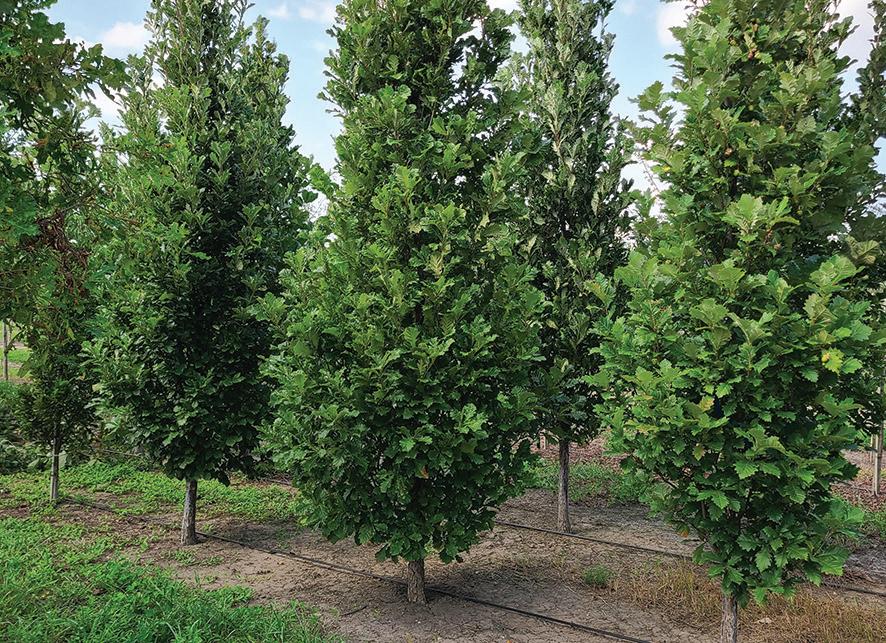

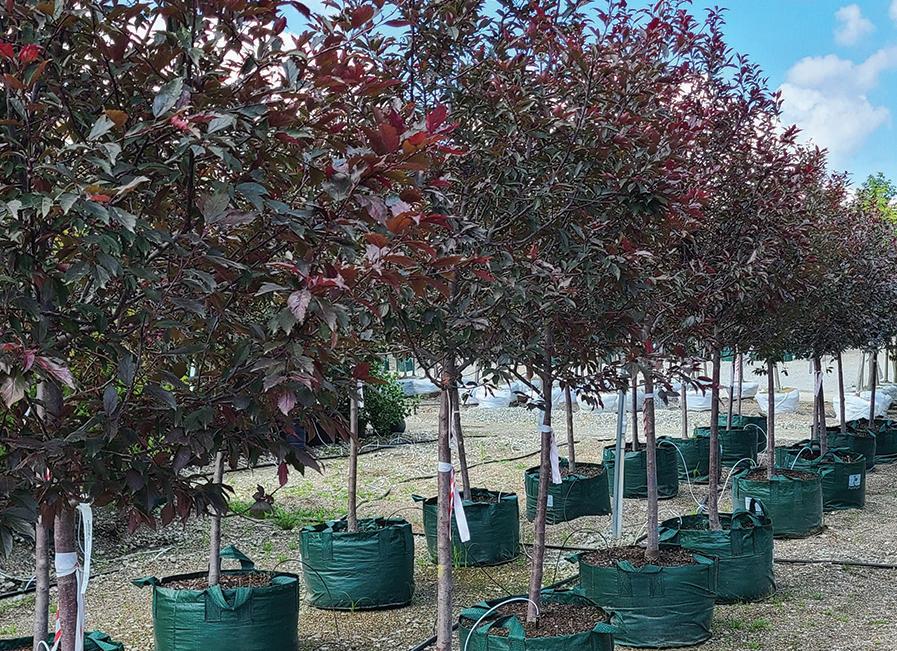
or
Follow us on your favorite social media outlets.




Westfield Indianapolis 4867 Sheridan Road, Westfield, IN 46026 4316 Bluff Road, Indianapolis, IN 46217 317.877.0188
877.829.0188 317.783.3233
of 800.921.3233
BrehobNursery.com

































 By Angela Rust
By Angela Rust

















































































